Treasury Clearing Documentation Training Seminar
Join SIFMA and Cleary Gottlieb in New York City for a half-day deep dive technical training seminar to equip financial…

5:00pm – 6:00pm
Join fellow Year 1 participants and the SII Board of Trustees at The Palestra for a Year 1 Welcome prior to the start of the Opening Night Reception. Year 1 participants will complete onsite registration at arena.
The Palestra address is 235 S 33rd St, Philadelphia, PA 19104. The arena is walking distance to the below hotel properties. Walking directions will be available on the SII mobile app. A shuttle will be provided from the Homewood Suites to the Inn at Penn then participants can walk over from The Inn.
6:00pm – 8:00pm
Join fellow participants and the SII Board of Trustees at The Palestra for a welcome reception to kick off Institute Week. Registration will take place at the arena.
The Palestra address is 235 S 33rd St, Philadelphia, PA 19104. The arena is walking distance to the below hotel properties. Walking directions will be available on the SII mobile app. A shuttle will be provided from the Homewood Suites to the Inn at Penn then participants can walk over from The Inn.
7:15am – 8:15am
8:45am – 10:15am
Melissa Stockwell has been a restless force of nature from the time she was a little girl speeding around her neighborhood on her bike, to her tumbles and spills as a high-level gymnast and Olympic hopeful, to joining the ROTC in college as an outlet for her patriotism and love of America.
After 9/11, she was deployed to Iraq as a commissioned Army officer, where she suffered the injury that would change her life forever. After a long and challenging recovery at Walter Reed Hospital, she exercised her power of choice to channel her energy into competition, winning three Paratriathlon World Championships and medaling at the 2016 Rio Paralympics.
Her journey weaves service to her country and the heartache of a painful divorce along with founding a successful nonprofit, launching a career in prosthetics, finding new love, and becoming a mother to two children. Along the way, she meets all the living American presidents and inspires others with disabilities—through a story that is riveting, moving, and an inspiration for anyone who would choose to live their life to the fullest.
All participants will receive a copy of Melissa’s book The Power of Choice. Sponsored by Hilltop Securities.
Melissa Stockwell

10:35am – 12:05pm
CFP®, CIMA®, CPWA®, CIMC®, and RMA℠ Eligible
Also offered on Wednesday at 1:30pm
This session will explain why the Federal Reserve’s response to the Covid Pandemic has caused so much inflation and why they must look at money and market prices to determine monetary policy. We will also examine the valuation of the market and the forecast for interest rates.
Learning Objectives:
Jeremy Siegel

CFP®, CIMA®, CPWA®, CIMC®, and RMA℠ Eligible
Central banks have come to be regarded as the “only game in town” for economic policy-making, something that the Covid-19 pandemic, the inflation of 2021-2023, and the banking crisis of 2023 made more prominent. But what are these curious institutions, where did they come from, and where are they going? This session analyzes these and related issues by providing a brief history of central banking and focusing on the ways that central banks today and in the future will dominate the landscape for banking and finance the world over. The focus will be on the Bank of England, the U.S. Federal Reserve System, and the People’s Bank of China and on any relevant topic that students wish to engage, from inflation to financial regulation, banking crises to bank capital, presidential politics and central banks in war and peace.
Peter Conti-Brown
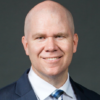
CFP®, CIMA®, CPWA®, CIMC®, and RMA℠ Eligible
In 2024, finance professionals face a time of uncertainty on economic, financial, and geopolitical fronts. This uncertainty follows the past 27 years of frequent bouts of volatility in both economies and asset markets worldwide. We witnessed the hype of the dot.com bubble and its subsequent bursting, leading to a global recession. Central banks, including the Federal Reserve, lowered interest rates and the global economy and asset markets rebounded strongly. However, along came the debt-fueled global real estate bubble. The bursting of that speculative bubble caused a worldwide stock market crash, global financial crisis, and “Great Recession.” Investors who did not panic gained from a strong recovery in global asset markets starting in March 2009. Many real and financial assets both in the US and abroad reached record-high prices in February 2020. The high valuations led many to fear significant market risks, for example from a possible global economic slowdown or a trade war with China stemming from President’s Trump’s tariffs on Chinese goods.
The risk that was not anticipated was public health. The pandemic led to a sudden drop in the stock market, which declined by 34% from its February 2020 peak to its trough in March 2020. The economy moved from its record-long (nearly 11 consecutive years) economic growth phase to a short but severe economic depression; a net of over 22 million US jobs were lost in March and especially in April 2020. Massive government intervention, with unprecedented expansionary fiscal and monetary policy, restored economic growth. The massive monetary and liquidity expansion by the FED, and its creation of near-zero interest rates, fueled a rapid V-shaped rebound of the stock market. Stock market and real estate prices continued to climb to successive new highs. Economic growth surged.
Economic growth continued, but it decelerated in autumn and winter 2020-21 as a second surge of COVID infection acted as a brake. Fortunately, vaccines became available and as their distribution spread many jobs were created in service industries. Economic and job growth continued, although the delta and then Omicron variants, did slow economic growth in winter 2021-22. Still, steady growth in jobs brought the unemployment rate quite low. The surprising strength of the economy caused a level of job openings that was unprecedented and unanticipated. The tightness in the job market led to larger wage increases and combining that with global supply-chain problems led to a rise in US inflation. Russia’s unwarranted invasion of Ukraine reduced global supplies of energy and food, accelerating inflation worldwide. This put pressure on many Central Banks to rein in their monetary and fiscal policies, leading major economies to the precipice of recession. Economic growth has stalled in Europe and the US. We heard a term from the late 1970s, stagflation. The hope is for a soft landing – most analysts did not predict it – and the FED seemed to have succeeded. We will examine the current situation, while also analyzing longer-term past trends in the economy and financial markets, all with an eye to understanding possible future trends and scenarios.
Underlying longer-term economic and financial forecasts are major demographic trends. In general, birth rates have declined significantly worldwide, plunging steeply in some nations in Europe and East Asia. Even birth rates in the US are down since the Great Recession began in 2008, with fertility rates now below the level needed to “replace” the US population absent immigration. In the recent past, demographic trends highlighted low birth rates and consequent aging in advanced economies, contrasting with high birth rates and youthful populations in emerging markets. Global labor force growth would have to come from emerging or poorer economies. Now, even many emerging markets have declining birth rates. Analyzing demographic trends is crucial for investing strategy.
This session will separate fact from fiction while analyzing the implications of global forecasts and linkages for investors. The uncertainty regarding the pandemic, the U.S. and global economies, inflation, Russia/Ukraine and commodity prices, interest rates, exchange rates, job markets, monetary and fiscal policy, and the sustainability of massively increasing government debt worldwide all point toward the need for a truly global diversification strategy. This session will feature a strategic look at the economic, financial, and demographic trends that are likely to evolve in the major economies of the future.
Learning Objectives:
Jeffrey Rosensweig

Pre-Class Assignment – Reading
Also offered on Monday at 3:20pm
High performance requires effective execution and, for many organizations, change management. Unfortunately, major change efforts have a dismal track record. In multiple studies, highlighting the experiences of hundreds of companies initiating large-scale changes, the overwhelming results are poor. For example:
As the Harvard Business Review’s editor articulated so well in discussing why so many transformation efforts fail:
“…no business survives over the long term if it can’t reinvent itself. But human nature being what it is, fundamental change is often resisted mightily by the people it most affects: those in the trenches of the business. Thus, leading change is both absolutely essential and incredibly difficult” (Kotter 2007).
Learning Objectives:
Jim Austin

Pre-Class Assignment – Videos with Multiple Choice Questions
CFP®, CIMA®, CPWA®, CIMC®, and RMA℠ Eligible
In this course Professor Tiffany will review the origins of the current global economy and how recent events have called into question the sustainability of free and open markets that were a key outcome of the historically prosperous post-WWII international political economy. The presentation will be preceded by a required short video that participants view prior to arriving in Philadelphia. The video will provide background content so that the live session can focus exclusively on current issues and allow sufficient time for participant discussion. To facilitate this, all attendees will be required to respond to multiple-choice questions about the video content; the responses will be presented in March.
The US elections of 2016 and 2020 created a potentially profound shift in recent American economic policy, both domestic and global– and the mid-term elections of 2022 do not appear to have not altered this trajectory. In the international arena the prior President staked out positions radically different from those of the post-World War II “Bretton Woods System” engineered by the US. This latter political-economic regime guided much of the world as “globalization” took hold and many Emerging Nations—especially China—prospered in what was termed the “Neoliberal Order.” Yet one critical result of Trump’s nationalistic “America First” agenda has been deep uncertainty about the future prospects of international trade policies, which played a significant role in the overall growth of global prosperity for the past 70 years- including in the financial services sector. And at least so far, the Biden Administration has done little to alter this path—especially with regard to US-China economic and political relations. Indeed, it is this latter issue which is driving so much of the long-term considerations about America’s economic future. The video will provide details concerning these events and, hopefully, stimulate your thoughts prior to the “live” sessions at Wharton.
March class: The class will provide a forum in which all participants will be encouraged to offer their own perspective on key issues regarding “Globalization” and its prospects going forward. The session will begin with (a) Professor Tiffany’s explication of five key take-aways from his video commentary, (b) a review of aggregated participant responses from the mandatory multiple-choice questions, (c) brief sharing by participants of ideas and insights, and (d) an open-mic discussion about what actions might be taken next on these important issues.
Learning Objectives:
Paul Tiffany

CIMA®, CPWA®, CIMC®, and RMA℠ Eligible
The key to a company’s financial success is strategy execution. Companies that have success in long term value creation have a passion for execution. This session will use financial tools to analyze the differences between value creating and value destroying companies and show that the pattern is the same in every industry and in every part of the world. At the strategy formulation stage, it is important to select a strategy that the company understand its capabilities to execute more effectively and increase the likelihood of success. It is important to realize that profitability is necessary, but it is very fragile and it can disappear rapidly as market systems evolve. It is important to be vigilant about the changes taking place in your industry.
Learning Objectives:
Joseph Perfetti

12:15pm – 1:15pm
Check your mobile app for location.
Join German Santo Sanchez, Broadridge Chief Strategy Officer, and Michelle Jackson, Global Managing Director of Client Innovation & Engagement for a look at key trends and technologies shaping the financial services landscape in the coming year. From AI and Blockchain to ESG and investor CX, hear what experts predict will shape the industry in 2024, and what firms can do to act on them.
Attendees will leave this session with:
Michelle Jackson, Germán Soto Sanchez


1:30pm – 3:00pm
CFP®, CIMA®, CPWA®, CIMC®, and RMA℠ Eligible
Public policy always impacts economies and financial markets. Such impacts are particularly pronounced now. The uncertainty surrounding trade, fiscal, geopolitical, and monetary policy is contributing to heightened market volatility.
Federal budgetary policy, termed fiscal policy, has been and increasingly will be a driving force. The pandemic cost the US 22 million jobs in March and April 2020. An expansionary fiscal policy, starting with the $2.3 trillion CARES act, helped lift the economy, but at the cost of a $3.1 trillion federal deficit in 2020 (all the deficits will be measure according to the federal fiscal year, which ends September 30). . Trillions of fiscal spending beyond the normal budget led to a further fiscal deficit of $2.8 trillion in 2021. The federal deficit for 2022 was halved, but still massive at $1.4 trillion dollars. This smaller or improved US government deficit had a short life, as it jumped back toward $2 trillion in 2023.
This improvement was before much of the added spending coming from the infrastructure or ‘build back better’ program of President Biden. His semiconductor subsidies will also boost the deficit. Of major importance, the increased interest rates engineered by the Federal Reserve during the last two years, applied to the massive federal debt – which has leapt above $34 trillion, boosts the Government’s interest spending and thus pumps up deficit spending.
Fiscal deficits imply government borrowing, achieved by issuing more Treasury Securities. Thus, deficits add to a Gross Federal Debt that has jumped significantly to over $34 trillion. A massive increase exceeding $10 trillion from $23.5 trillion a mere four years ago! If the deficits increase as forecast over the next decade, will the US government debt become so large that people and institutions, US and non-US, will not want to hold it? If so, bond prices would decline, market interest rates would rise, and the sustainability of the debt will become a crucial issue. Until recently, historically low interest rates have kept the US debt burden in check. However, as portrayed above, the increases in interest rates in 2022-23 engineered by the Federal Reserve boost interest payments on the federal debt and thus exacerbate the US fiscal deficit. Deficits add to debt, which must be serviced by interest payments, so the threat of a vicious circle of deficits and debt could loom.
Further, government deficits can exacerbate trade deficits. Overspending by the government can lead to overspending by the nation, including on imports. This seems to be the case in the US in recent years, and probably during recent decades. Massive US trade deficits inspired President Trump to turn toward protectionist trade policy. Trump’s trade policies risked trade wars, especially with China, resulted in an improved “new NAFTA,” which he renamed USMCA, and added uncertainty to the financial outlook. Biden’s trade policies mainly continue Trump’s policies. The impact on business and markets stemming from US trade policies will be analyzed.
Driving forces that could lead to more restrictive or protectionist trade policies are subsumed under the term deglobalization. The pandemic exposed the problem of globalized supply chains, aiming to achieve maximum efficiency under free trade. Now, nations and firms are focusing more on the resiliency of supply chains, to avoid dependency on foreign suppliers. Further, the US (and some other major economies) face many geopolitical risks and international “hot spots” of potential conflict. Thus, policy towards national security will be crucial. Impacts are likely to be felt during 2024 and beyond in the economy, in business opportunities, in financial markets, and in the Biden approach to foreign policy.
The overarching goal of this elective is to engage SII participants to explore relevant US policies now and in the future.
Learning Objectives:
Jeffrey Rosensweig

Also offered Monday at 3:20pm
(Revised session from Images of Leadership; may contain some overlap)
What is your leadership style? Do you prefer to lead by example? Do you like to make decisions and then direct traffic? Do you think followers come first then leaders? Do you like to ask “What do you think?” or say “Try this” or “Come follow me?” Whether you prefer to direct or to empower others – to “push” or “pull” others along, your leadership style has consequences on your organization’s climate and productivity. With the aid of video clips as well as group and individual exercises, you will have the chance to identify various leadership styles, consider the pros and cons of each style, and reflect on your own preferences.
Learning Objectives:
Anne Greenhalgh

CIMA®, CPWA®, CIMC®, and RMA℠ Eligible
According to the World Economic Forum, we live in what is referred to as the Fourth Industrial Revolution. The speed of current breakthroughs has no historical precedent. Compared with previous industrial revolutions, the Fourth is evolving at an exponential rather than a linear pace. It is disrupting every industry in every country and will fundamentally alter the way we live, work, and relate to one another.
Learning Objectives:
John Spence

Pre-Class Assignment – Reading
CFP®, CIMA®, CPWA®, CIMC®, and RMA℠ Eligible
This session will investigate why healthcare spending always goes up, what are the drivers, and what can be done about it.
Learning Objectives:
Lawton Robert Burns

CFP®, CIMA®, CPWA®, CIMC®, and RMA℠ Eligible
The 21st century has and will continue to see a revolution in the way we think about money. In this session, financial historian and legal scholar Peter Conti-Brown will provide an overview of what money is, where it comes from, and where it is going. He will focus on revolutions to the payment system, including central bank digital currency, fintech innovations, and crypto currency; what new regulatory approaches to fintech will mean; and what entrepreneurial options you should watch in 2024 and beyond.
Peter Conti-Brown

Also offered Wednesday at 1:30pm
“All the world’s a stage, and all the men and women merely players”, wrote Shakespeare. Leaders often step onto stage – to present an idea, influence a decision, ask for more resources, or inspire others to action – and these experiences require practice, poise, presence, and purpose. This session aims to understand what separates a good from a great speaking engagement and offers tangible skills to strengthen your public presence. These skills are not only useful for large presentations with dozens or hundreds in the audience but also for smaller gatherings, client meetings, team huddles, and other crucial business interactions where public speaking can be a difference maker. Not only will this session focus on outward-facing skills but will also help connect a leader’s public presence with their own authentic self. While some might argue that strong public speakers possess this skill innately, this workshop will prove otherwise as we demystify the building blocks of public speaking and train ourselves to strengthen our own engagement with audiences. By learning to be more “present,” participants will understand how to be more motivational as a leader, more convincing as a negotiator and more open and honest as a team member. This workshop develops and utilizes a practical toolkit for leaders to continue working on their public speaking and their ability to communicate their vision and their story long after the workshop has ended.
Learning Objectives:
Quinn Bauriedel

Also offered Monday at 3:20pm
Leaders inspire, build capacity in others, lead change, and motivate employees to do more than they thought possible. This session typically includes a short exercise where we watch film clips to identify inspirational leadership behaviors. Each team presents an inspiring vision and employs inspirational behaviors to respond to the crisis. Participants will discuss how visionary leaders inspire people to connect to the organization’s purpose, and understand where their particular contributions fit into the vision and how they belong to something larger than themselves.
After this session, you should be able to:
Todd Henshaw

CFP®, CIMA®, CPWA®, CIMC®, and RMA℠ Eligible
Pre-Class Assignment – Reading
Also offered Monday at 3:20pm
Conventional wisdom is that two-thirds of mergers and acquisitions (M&A) fail to meet their financial targets/business objectives, but this need not be the case! This session considers best practices in the successful implementation of mergers and acquisitions. Participants will develop a detailed framework to understand, during the valuation/bidding and preclosing stages, the strategic, cultural, and operational drivers that make an M&A deal successful. We will have an in-depth discussion of pre- and post-merger integration activities, with a particular focus on including accurate cost estimates for integration aspects in the bidding process, the tradeoffs and interdependencies that firms often encounter when implementing M&A, as well as the role of M&A experience and its relationship to firm performance. Emphasis is placed on the idea that M&A is a holistic process involving staff throughout the enterprise, that encompasses both strategic and financial considerations and that spans the entire period of time from initiation, valuation and bidding all the way through to closing, implementation and post implementation.
Emilie Feldman

CFP®, CIMA®, CPWA®, CIMC®, and RMA℠ Eligible
This session covers macroeconomic analysis, with an emphasis on current events and policy applications. The goal is to provide the background needed to understand the broad movements in the global economy. This session can be tailored to cover specific topics such as national income accounting, long-run economic growth, technological changes, the labor market, business cycles, inflation, interest rates, monetary and fiscal policy, international trade and investment, exchange rates and international finance.
Joao Gomes

Also offered Monday at 3:20pm
Effective leaders recognize they must carefully manage both the external and internal environment. They inspire, provide clarity of purpose, seek diversity of thought and contrary views, and build a culture of trust. Leaders also develop a keen awareness of external forces and turn threats into opportunities by building an organizational capability of adaptability. In short, leaders build a PERCEPTIVE organization that is poised to achieve and maintain sustainable positive results.
Learning Objectives:
Kathy Pearson

CIMA®, CPWA®, CIMC®, and RMA℠ Eligible
Quantum computers have moved from science fiction to science fact in just the last few years, and they are close to creating a “cryptographically relevant quantum computer” that can defeat the current PKI encryption standards that defend the global financial ecosystem. A race is underway now to define new standards of encryption that will withstand a quantum assault, and further have products built, systems upgraded, and new ‘crypto agility’ capabilities propagated throughout entire enterprises. Learn what steps financial companies are taking now, to both prepare for the near future, and defend against the latest “steal now, decrypt later” attacks underway today. This class will provide an overview of the risks and rewards of quantum computing, and lay out the eight step process that financial companies are starting today to ensure they are defended against what the Financial Times called ‘Encryptogeddon.’
Tom Patterson

1:30pm – 4:50pm
Also offered Wednesday at 1:30pm
Recent academic work on the science of innovation and creativity has revealed a new, evidence-based approach to coming up with new ideas and solving problems – but it is one that is not widely known outside of academia! In this session, we will first discuss these new approaches to innovating, including a number of simple tips and common mistakes. Then, in the second half of the session, you will play the Breakthrough Game, which allows you to apply the tools you learned to use in a fun and engaging way. Playing the Breakthrough Game, participants not only solve one particular challenge as a team but also, crucially, learn how to drive the innovation process in the future.
You will come out of this session with short-term takeaways that will make your future idea generation sessions more productive, an actionable idea that you can pursue, and a general framework that you can use to solve problems and search for new opportunities.
Jacqueline Kirtley

CIMA®, CPWA®, CIMC®, and RMA℠ Eligible
The idea that innovation comes only from startups and entrepreneurs is a myth. Employee innovators, also known as Intrapreneurs, are responsible for 70% of the most transformative innovations of the past three decades.
In our accelerated world of technology and disruption, the benefits of turning employees into Intrapreneurs are well documented. Companies that treat their people as Intrapreneurs have innovation infused into their DNA. Transformation becomes a toned muscle and capability that can be exercised repeatedly as needed. Best-selling author and globally ranked innovation expert Kaihan Krippendorff’s research shows companies with active Intrapreneur networks are 3X more likely to be in the top quintile of financial performance and enjoy a 2.5X advantage in their ability to recruit and retain top talent.
The IN-OVATE framework provides a specific and practical approach to turn your employees into Intrapreneurs, and build capacity for enterprise-wide transformation and smart innovation.
IN-OVATE Framework Summary – Turn Employees into Intrapreneurs
In this inspiring, timely, and high-impact session, Kaihan shows how organizations can unlock the power of Intrapreneurship, and how you, the individual Intrapreneur, can navigate barriers, overcome resistance, and take the initiative to drive transformation across your organization.
The audience will leave with:
Kaihan Krippendorff

This session will involve an experiential case where participants will play the role of a board facing an unexpected and shocking ethical crisis. The case is episodic, allowing participants to make decisions as they obtain new information. The case will provide participants an opportunity to grapple with important contemporary issues including, i) how to balance stakeholder and shareholder interests, ii) how leaders balance considerations of transparency and control when faced with damaging internal information, iii) how to structure an internal corporate investigation, and iv) how to determine whether an ethical lapse is an individual versus organizational issue. A former federal prosecutor will join Professor McDonnell in debriefing the case to shed additional light on its legal and investigative components.
Mary-Hunter McDonnell

CIMA®, CPWA®, CIMC®, and RMA℠ Eligible
Pre-Class Assignment – Reading
The ability to negotiate productively is a critical part of both business and personal success. In this interactive session we will conduct a negotiation that is both fun and challenging. The negotiation simulation will highlight several key concepts in negotiation, assist you in thinking about negotiation strategically, and help you improve the outcomes of your future negotiations. In addition, we will identify what your negotiation style is and the pros and cons of using it in different situations.
Sarah Light

Pre-Class Assignment – Assessment
CIMA®, CPWA®, CIMC®, and RMA℠ Eligible
Also offered Thursday at 1:30pm
This workshop will help strengthen your influence and persuasion skills. Everybody needs these skills to build momentum for important initiatives, achieve organizational alignment, and implement strategies. Through a series of interactive discussions and role-plays, you will answer four key questions in this workshop: What are the steps that led to buy-in? What is your communication style and how do you use to engage stakeholders? How do you make your ideas simple and compelling? How do you generate lasting commitment? The workshop content is drawn from the book The Art of Woo: Using Strategic Persuasion to Sell Your Ideas (Portfolio/Penguin), co-authored by G. Richard Shell and Mario Moussa. This class will require pre-work to be completed prior to the participants’ arrival.
Learning Objectives:
Mario Moussa

Pre-Class Assignment – Reading
CIMA®, CPWA®, CIMC®, and RMA℠ Eligible
Design thinking is a customer / user-centric approach used for solving business challenges by working in collaborative, diverse teams and employing an accelerated rapid prototyping / test and learn sprint format. This approach can be used to solve for both customer engagement and operational challenges. In fact, the design thinking approach and mindset can be targeted towards nearly all business challenges. The best way to learn about adopting design thinking is to “just do it”. This extended and interactive participation session will actively demonstrate the application of design thinking to solve for a challenge statement which will have been previously identified by SII participants. Participants will work together in small teams facilitated by Elixirr’s design thinking experts to design, rapidly prototype and peer test a solution.
Learning Objectives:
David Grey, Lauren Kauffman, John Stefani



3:20pm – 4:50pm
Pre-Class Assignment – Reading
CIMA®, CPWA®, CIMC®, and RMA℠ Eligible
Also offered Thursday at 8:45am
You can’t drive a car looking in the rear view mirror. Traditional metrics are backward looking. They keep score. What did you do last month, last quarter and last year? Companies need to keep score to assess performance: growth, margin, return on equity, and total shareholder return are common metrics. They do not tell you how the company will do in the future. Value is about the future. In the age of agile, companies need to increasingly start putting forward looking and predictive metrics on their dashboards. The Agile Dashboard was researched and developed to help organizations address this gap. The Agile Dashboard looks at three categories of metrics: Speed, Interaction Time and Pivot. These are critical elements for leaders to monitor whether their organizations are prepared to operate successfully in an uncertain future. This session will explain each of the three sections of the Agile Dashboard, provide metrics for each and share examples of their applicability to financial organizations.
Joseph Perfetti

(Previously titled Resilience and Optimism)
This session will discuss the science of resilience and well-being and teach actionable skills to navigate adversity and thrive in challenging environments. During this interactive session, attendees will discuss ways to apply the strategies in their professional as well as their personal lives.
Learning objectives:
Judy Saltzberg

CFP®, CIMA®, CPWA®, CIMC®, and RMA℠ Eligible
(Previously titled Building Better Retirement Systems in the Wake of the Global Pandemic)
The pandemic has accentuated stresses on global aging, requiring policymakers and retirees to become newly aware of the need for better risk management tools to handle longevity and aging. I will evaluate how retirement systems have fared in the wake of the pandemic, and examine insurance and financial market products that may render retirement systems more resilient for the world’s aging population.
Learning Objectives:
Olivia Mitchell

Also offered Monday at 1:30pm
(Revised session from Images of Leadership; may contain some overlap)
What is your leadership style? Do you prefer to lead by example? Do you like to make decisions and then direct traffic? Do you think followers come first then leaders? Do you like to ask “What do you think?” or say “Try this” or “Come follow me?” Whether you prefer to direct or to empower others – to “push” or “pull” others along, your leadership style has consequences on your organization’s climate and productivity. With the aid of video clips as well as group and individual exercises, you will have the chance to identify various leadership styles, consider the pros and cons of each style, and reflect on your own preferences.
Learning Objectives:
Anne Greenhalgh

CFP®, CIMA®, CPWA®, CIMC®, and RMA℠ Eligible
Impact and ESG investing has skyrocketed in popularity with investors worldwide. But many people don’t realize how wide-ranging these disciplines have become. Twenty years ago it was stock or occasionally other portfolios which screened companies in or out based on their social investing characteristics. Today, ESG and social-impact oriented strategies include new products and asset classes, influencing corporate governance through shareholder activism, Corporate Social Responsibility, Donor-Advised Funds, and bold for-profit approaches to helping the poor in the developing world.
This session provides an overview of the most important ESG and impact-investing concepts and styles and a look at whether investment return need be sacrificed for social benefit. It offers a high-level view of the products and strategies now permeating not only institutional, but retail investing as well.
Christopher Geczy

Pre-Class Assignment – Reading
Also offered Monday at 10:35am
High performance requires effective execution and, for many organizations, change management. Unfortunately, major change efforts have a dismal track record. In multiple studies, highlighting the experiences of hundreds of companies initiating large-scale changes, the overwhelming results are poor. For example:
As the Harvard Business Review’s editor articulated so well in discussing why so many transformation efforts fail:
“…no business survives over the long term if it can’t reinvent itself. But human nature being what it is, fundamental change is often resisted mightily by the people it most affects: those in the trenches of the business. Thus, leading change is both absolutely essential and incredibly difficult” (Kotter 2007).
Learning Objectives:
Jim Austin

Also offered Monday at 1:30pm
Leaders inspire, build capacity in others, lead change, and motivate employees to do more than they thought possible. This session typically includes a short exercise where we watch film clips to identify inspirational leadership behaviors. Each team presents an inspiring vision and employs inspirational behaviors to respond to the crisis. Participants will discuss how visionary leaders inspire people to connect to the organization’s purpose, and understand where their particular contributions fit into the vision and how they belong to something larger than themselves.
After this session, you should be able to:
Todd Henshaw

CFP®, CIMA®, CPWA®, CIMC®, and RMA℠ Eligible
Pre-Class Assignment – Reading
Also offered Monday at 3:20pm
Conventional wisdom is that two-thirds of mergers and acquisitions (M&A) fail to meet their financial targets/business objectives, but this need not be the case! This session considers best practices in the successful implementation of mergers and acquisitions. Participants will develop a detailed framework to understand, during the valuation/bidding and preclosing stages, the strategic, cultural, and operational drivers that make an M&A deal successful. We will have an in-depth discussion of pre- and post-merger integration activities, with a particular focus on including accurate cost estimates for integration aspects in the bidding process, the tradeoffs and interdependencies that firms often encounter when implementing M&A, as well as the role of M&A experience and its relationship to firm performance. Emphasis is placed on the idea that M&A is a holistic process involving staff throughout the enterprise, that encompasses both strategic and financial considerations and that spans the entire period of time from initiation, valuation and bidding all the way through to closing, implementation and post implementation.
Emilie Feldman

CFP®, CIMA®, CPWA®, CIMC®, and RMA℠ Eligible
This session provides a broad survey of economic trends affecting firms, markets, and investors. It should help participants understand current events in the economy and markets and incorporate them in their decision-making. The core session discusses the outlook for the three main economic powers: US, China and Europe. Coverage of emerging markets or particular countries and regions can be added in extended or customized versions of this session. Learning Objectives: After this session, you should: Understand the outlook for the U.S. economy and its main economic challenges both in the near term and at longer horizons Understand the outlook and challenges in for China and Europe Discuss and form reasonable expectations about the prospects for interest rates, equity prices and exchange rates in the near term.
Joao Gomes

Also offered Monday at 1:30pm
Effective leaders recognize they must carefully manage both the external and internal environment. They inspire, provide clarity of purpose, seek diversity of thought and contrary views, and build a culture of trust. Leaders also develop a keen awareness of external forces and turn threats into opportunities by building an organizational capability of adaptability. In short, leaders build a PERCEPTIVE organization that is poised to achieve and maintain sustainable positive results.
Learning Objectives:
Kathy Pearson

Pre-Class Assignment – Reading
CIMA®, CPWA®, CIMC®, and RMA℠ Eligible
American society is transforming. It’s aging. And with aging, we accumulate more and more wealth. In time, we need that wealth for our well-being, pleasure, and legacy. With aging, we’re also more likely to experience cognitive impairments. Persons with cognitive impairment need care, but there are fewer and fewer people available to care for them, especially the free labor of close by family. Persons with cognitive impairment are at heightened risk to make errors in financial management or be victims of financial fraud or abuse. Together, these facts distill a powerful brew of challenges for older adults, their families, medicine and the banking and financial services industries. This course will overview the common causes of cognitive complaints and cognitive impairment and the latest initiatives to improve the diagnosis and care of these disorders, and to address fraud and abuse. Particular attention will be paid to issues at the intersections of cognitive health and wealth. These include understanding what are the causes of cognitive problems, and how they impact of financial capacity. A smart firm will strive to practice “whealthcare” (learn more at www.whealthcare.org). The lecturer will examine how a firm might achieve this through staff training, effective communication with clients and their families (especially in light of FINRA rule 4512), and deploying novel technologies to monitor and detect changes in financial capacity, and as well, fraud and abuse. The class will have a look into the future of the monitored brain. Attendees will leave inspired to make changes in the ways they conduct business so that they can better serve the health and wealth of the older clients and their families.
Learning Objectives:
Jason Karlawish

CIMA®, CPWA®, CIMC®, and RMA℠ Eligible
Pre-Class Assignment – Brief Exercise
Leaders and their organizations flourish when guided by a clear understanding of the “Why” and “What” they aim to achieve. The challenge often lies in aligning these objectives while achieving stakeholder needs and requests. Many leaders find themselves grappling with the Herculean task of balancing their goals and values while striving for outstanding outcomes. This session addresses the critical leadership hurdle: discerning what not to do without compromising critical objectives or values. Many leaders find this to be their core leadership challenge. Therefore, having direction with clarity enables navigating when and what to say no to and avoiding the trap of “busyness” where distractions and “to do” lists lead the way. This interactive session introduces a structured approach using participants’ own examples and small group collaboration. The primary focus of this session is on identifying what can be relinquished to enhance the chances of successfully achieving key priorities and overcoming biases that hinder such decisions.
Learning Objectives:
Dafna Eylon

5:00pm – 6:30pm
Sponsored by Edward D. Jones & Co., L.P.
Join fellow SII participants and the SII Board of Trustees for a networking reception.
7:15am – 8:15am
8:45am – 10:15am
CIMA®, CPWA®, CIMC®, and RMA℠ Eligible
Also offered Tuesday at 1:30pm
Everyone agrees that people, firms, and the financial industry in general need good ethics. But this only prompts the question. What does it mean to be ethical? Unfortunately, most of the answers we hear on this question are talking about something else—legal obligations, compliance, marketing, and more. In this session, Professor Peter Conti-Brown takes participants on a tour of unlearning by showing how ethical decision-making differs from these other domains. Instead, ethical decision-making is about values and business strategy, not peripheral to the day-to-day of performing your job at the highest level but central to it. Using examples from the financial services and other industries, Conti-Brown challenges participants to think hard about the ongoing challenge not only to identify unethical behavior but the more difficult task of building ethical individuals, teams, and firms.
Peter Conti-Brown

Also offered Tuesday at 1:30pm
An on-going conversation is taking place across organizations related to the challenges (and benefits) of managing different generations at work. The dynamics of generational diversity have only amplified since the COVID-19 pandemic: employers have navigated dynamics like the great resignation, quiet quitting, calls for more diversity and equity, all while trying to decide whether work must be done in person or not. Younger workers are more empowered and vocal about their desires. As a consequence, it is more important than ever for leaders to develop their “generational intelligence” – that is, the ability to understand, motivate, and inspire staff across generations.
Generational intelligence begins with the awareness of our generational differences – but it also includes our appreciation for, and flexibility with, how we respond to those differences and similarities at work. Where once generational intelligence might have once been considered a “nice to have” skill among leaders, this competence is critical, especially now, when workers across generations are questioning and challenging the status quo at work.
In this course, we will discuss the values and worldviews members of different generations bring to the workplace and why. We will discuss the elements of a collaborative environment that engages staff across generations, and we will explore how you, as leaders, can help co-create an organization, and a team culture, that will more effectively engage contributors, leaders, as well as clients.
Learning Objectives:
Yael C. Sivi

10:35am – 12:05pm
Also offered Thursday at 10:35am
The culture of your organization determines its long-term success. A positive workplace culture attracts top talent, drives engagement, fosters teamwork, and increases retention. Culture is what makes strategy happen. Culture also plays a significant role in how your customers view you. Better business results start with a more robust organizational culture.
However, a great culture does not happen by chance. It must be carefully designed and continuously nurtured. Although every organization will have unique aspects of culture, a handful of fundamental ideas are essential to creating a vibrant culture.
Learning Objectives:
John Spence

Pre-Class Assignment – Videos with Multiple Choice Questions
CFP®, CIMA®, CPWA®, CIMC®, and RMA℠ Eligible
Also offered Thursday at 10:35am
In this YI core course Professor Tiffany reviews the historical evolution of the American economy from the beginnings of the Republic up until the present day (participants will be assigned to one of three identical class sessions).
Pre-Program Videos: The course will start with three short videos, available for participant viewing prior to the sessions in Philadelphia. These required videos—approximately 30 minutes each– will provide background content so that the live session can focus on key issues and provide time for participant discussion. Following viewing, all participants will be required to respond to multiple-choice questions and submit their results to the SII Team. We will review responses in the sessions at Wharton.
Video I “Foundations” will begin with an emphasis on the foundations for future economic growth that were created at the beginning of the Republic, and which will take us up to 1865. In this we will emphasize how America differs from essentially all other nations of the world with its direct focus on individual property rights that were to be exercised in a capitalist market economy— rights captured in the Constitution– that continue down to the present time, and which in many respects continues to define the nation’s political issues. We then discuss the creation of the economic infrastructure that paved the way for the post-Civil War industrial boom.
Video II “The Rise of ‘Big Business’” will cover the period following the Civil War up through outbreak of World War II. By the end of the 19th Century a set of critical trends converged that were to shape the emergence of an economy dominated by the large industrial firm. This period is often characterized as the “Robber Baron” era of “creative destruction” and in which the entrepreneurial “Schumpeterian Hero” leveraged new technologies that profoundly transformed America and laid the groundwork for the nation’s global economic dominance in the 20th Century. Yet as the large firms prospered and America transformed into an industrial giant, another set of conditions began to arise that would challenge the hegemony of the corporation as the dominant institution in American life—that is, the Great Depression. Only a devastating global war brought this event to a close, and with it new restrictions on the relationship between business and government.
Video III “The ‘American Century’—and Beyond” will bring the discussion up to the present time. We will first review how the US economy reacted to the demands of another global war, and then how the outcome of that conflict set the stage for the emergence of the so-called “American Century” and the nation’s remarkable economic growth and prosperity up to the 1970s. Yet it was at this point in time that underlying problems began to surface, even though a second “Schumpeterian Era of Creative Destruction” was creating the “new economy” of technology-dominated businesses in the latter decade of the 20th Century. More significantly, the simultaneous advent of “globalization” that emerged in full by the start of the 21st Century began to threaten US world economic dominance, through the rise of China and other emerging nations—and a growing disparity in the financial returns from globalization that found fewer and fewer people gaining more and more of the benefits. The central issue we will discuss here: can the US sustain “the American Century” of global economic dominance going forward– or is it some other nation’s turn to lead?
March class: This will provide a forum in which all participants will be encouraged to offer their own perspective on key issues in US business and economic history and their implications for the future. The session will begin with (a) Professor Tiffany’s explication of five key take-aways from his video commentaries, (b) a review of participant response totals from the mandatory questions, (c) brief sharing by participants of ideas and insights with classmates, and (d) an open-mic discussion about where we go from here.
Learning Objectives:
Paul Tiffany

12:15pm – 1:15pm
Check your mobile app for location.
1:30pm – 3:00pm
CIMA®, CPWA®, CIMC®, and RMA℠ Eligible
Also offered Tuesday at 8:45am
Everyone agrees that people, firms, and the financial industry in general need good ethics. But this only prompts the question. What does it mean to be ethical? Unfortunately, most of the answers we hear on this question are talking about something else—legal obligations, compliance, marketing, and more. In this session, Professor Peter Conti-Brown takes participants on a tour of unlearning by showing how ethical decision-making differs from these other domains. Instead, ethical decision-making is about values and business strategy, not peripheral to the day-to-day of performing your job at the highest level but central to it. Using examples from the financial services and other industries, Conti-Brown challenges participants to think hard about the ongoing challenge not only to identify unethical behavior but the more difficult task of building ethical individuals, teams, and firms.
Peter Conti-Brown

Also offered Tuesday at 8:45am
An on-going conversation is taking place across organizations related to the challenges (and benefits) of managing different generations at work. The dynamics of generational diversity have only amplified since the COVID-19 pandemic: employers have navigated dynamics like the great resignation, quiet quitting, calls for more diversity and equity, all while trying to decide whether work must be done in person or not. Younger workers are more empowered and vocal about their desires. As a consequence, it is more important than ever for leaders to develop their “generational intelligence” – that is, the ability to understand, motivate, and inspire staff across generations.
Generational intelligence begins with the awareness of our generational differences – but it also includes our appreciation for, and flexibility with, how we respond to those differences and similarities at work. Where once generational intelligence might have once been considered a “nice to have” skill among leaders, this competence is critical, especially now, when workers across generations are questioning and challenging the status quo at work.
In this course, we will discuss the values and worldviews members of different generations bring to the workplace and why. We will discuss the elements of a collaborative environment that engages staff across generations, and we will explore how you, as leaders, can help co-create an organization, and a team culture, that will more effectively engage contributors, leaders, as well as clients.
Learning Objectives:
Yael C. Sivi

3:20pm – 4:50pm
CIMA®, CPWA®, CIMC®, and RMA℠ Eligible
Also offered Thursday at 8:45am
The skills to manage mental illness are different than the skills needed to cultivate well-being. This session focuses on 5 research-based skills that anyone can use to cultivate well-being and take a proactive approach to preventing mental stress and illness. While Employee Assistance Programs focus on issues that people have at the workplace, there are little resources available for those of us who do not have issues however wish to harness their well-being and resultantly their performance. The 5 skills discussed in this session are ones that can be immediately practiced, applied, and taught to others. These skills capitalize on our mental, emotional, and behavioral attributes so participants learn to harness their own resources to feel better, function more effectively, and increase their well-being.
Participants will learn:
Faisal Khan

Participants will be on their feet for part of this session
Participants will learn how to build an adaptive, innovative team culture through learning a cutting-edge technique called the “After Action Review.” The After Action Review (AAR) is used by many organizations, including the United Nations, Microsoft, Harley Davidson, Navy Seals, to enhance commitment, focus on continuous improvement and sharing best practices across teams and organizations. Leaders can leverage the AAR to implement and reinforce change efforts, improve process execution, shape culture and influence employees to learn from past performance. Participants will learn how to conduct an effective After Action Review and will participate in the “Crossing the River” exercise—an engaging, fun and practical application of adaptive leadership in a challenging environment.
Learning Objectives
Todd Henshaw

CIMA®, CPWA®, CIMC®, and RMA℠ Eligible
Pre-Class Assignment – Reading
How is artificial intelligence changing the landscape of business? How can firms benefit from artificial intelligence? How do consumers interact with these new technologies? By the end of this session, participants will:
Pinar Yildirim

CIMA®, CPWA®, CIMC®, and RMA℠ Eligible
In today’s world, leadership isn’t just about business, it’s about life. Today’s business environment demands that leaders at all levels find better ways to align their vision, values, and everyday actions to perform well not only at work but also at home, in the community and society, in their private lives (mind, body, and spirit). In the ground-breaking Total Leadership program, you acquire practical tools for improving performance as a leader in all parts of life by finding mutual value among them. This dynamic, interactive program was developed originally by Stew Friedman for Ford Motor Company’s global executives while he was there on leave from Wharton, serving as the senior executive responsible for the company’s global leadership development strategy. The program involves self-assessment and peer coaching about your values and vision, about performance expectations held by the most important people in the different domains of your life, and about a real experiment designed to produce a “four-way win” – demonstrably better results in all domains of life. The Total Leadership program, subject of Friedman’s best-selling and award-winning book, is a popular Wharton MBA and Executive MBA course, and it has been proven effective in a variety of organizations and regions of the world with people in all stages of their careers.
Stew Friedman’s book Leading the Life You Want: Skills for Integrating Work and Life will be distributed to registered class participants. The book is sponsored by Raymond James.
Stewart Friedman

CIMA®, CPWA®, CIMC®, and RMA℠ Eligible
While technology is always changing, there are three key areas to focus on that will have a major impact on you, your company, your industry, and your country over the rest of your career. Learn what they are, why they matter, their latest advances, and what decisions you can make now that will be the difference between success and failure going forward. Whole new ways to compute, communicate, and decision are coming, and with them will be great risks and great opportunity. Get informed, involved, and advanced with the security aspects of Artificial Intelligence, Quantum Computing, and 5G communications in this fast-paced class.
Tom Patterson

CIMA®, CPWA®, CIMC®, and RMA℠ Eligible
In a world of escalated uncertainty, how do we plan and execute a growth mindset? This session combines established fundamentals and forward-looking frameworks to help managers deliver innovative growth under conditions of high-uncertainty. Participants will be engaged in discussions and presented with examples & tools to aid with the translation from classroom to operations. Key takeaways: Participants will be able to discern between revenue & value; risk & uncertainty; and necessary versus alpha-seeking innovation plays.
James Thompson
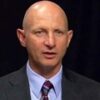
Pre-Class Assignment – Reading
CLE®, CIMA®, CPWA®, CIMC®, and RMA℠ Eligible
This session will simulate a real securities arbitration. Participants will watch a condensed proceeding based on common investor disputes, with experienced trial attorneys playing the roles of Claimant’s and Respondents’ counsel. A discussion of case, and of best practices to prevent litigation and client disputes, will follow. Participants will receive a one-page background fact document prior to attending this session.
Learning Objectives:
Tracy Gerber, Michael Ungar


Pre-Class Assignment – Questionnaire
CIMA®, CPWA®, CIMC®, and RMA℠ Eligible
The ability to negotiate productively is a critical part of both business and personal success. In this interactive session we will identify what your negotiation style is and the pros and cons of using it in certain situations. In addition, we will conduct a mock negotiation that is both fun and challenging. The mock negotiation will highlight several key concepts in negotiation, assist you in thinking about negotiation strategically, and help you improve the outcomes of your future negotiations.
Eric Max

The two challenges senior leaders cite, across industries, that are amplified in the time of a global pandemic are a high level of uncertainty and the need to balance short term and long-term needs and objectives. Leaders in financial services face similar concerns, particularly as the global pandemic has accelerated the need for a clear digital strategy. This session interactively discusses these challenges in the context of making strategic decisions effectively. Specifically, participants are provided five best practices that are important in “normal” conditions but are absolutely critical in a VUCA environment. Current anecdotes supplement empirical research.
Learning Objectives:
Kathy Pearson

Also offered Wednesday at 3:20pm
(Previously titled Strategies for Life Success)
When individuals understand how to get the best out of themselves, they can draw out the best in their team members and peers. Regrettably, most people fail to invest time to be self-reflective and create meaningful goals and then hold themselves accountable for progress towards those goals. In this session we will review the fundamental elements of creating a more happy, balanced, and successful life.
Learning Objectives:
John Spence

Pre-Class Assignment – Survey
(Previously titled Communication Style)
Do you prefer to communicate directly, emphasize facts over feelings? Are you more animated in your delivery? Do you take your listener’s feelings into account? Do you like to think first and then speak? Whatever your preference, what impact does your communication style have on others in the workplace whether one-on-one or in group meetings? How can you make the most of assets and downplay the liabilities of your communication style? Complete the HRDQ What’s My Communication Style questionnaire as pre-work, and this session will help you identify your dominant communication style and give you the opportunity to see your style in action so that you can make the most of assets and downplay liabilities. By the end of the session, you will have a greater appreciation of the impact of communication style on interpersonal relationships and results.
Learning Objectives:
Anne Greenhalgh

7:15am – 8:15am
8:45am – 10:15am
Also offered Wednesday at 10:35am
This engaging session focuses on common cognitive biases that afflict even the best decision makers. A number of biases are illustrated in the context of day-to-day judgments and decisions that we make in both our professional and personal lives. Through a series of examples, specific decision failures are identified and analyzed. The implications of these decision traps are examined, and recommendations on how to improve our decision skills offered.
Learning Objectives:
Roch Parayre

Also offered Wednesday at 10:35am
The MicroInequities: Managing Unconscious Bias™ program goes beyond the conventional approaches to managing Unconscious Bias in the workplace. This session does not focus on the ‘warm and fuzzy’ or ‘touchy feely’ side of this topic. Instead, Insight Education Systems, in its collaboration with M.I.T. has developed actionable solutions that uncover and merge unconscious bias into the epicenter of what leadership is fundamentally about. It provides the techniques and tools that make people skilled at driving change—not just being aware.
Being smarter about Unconscious Bias isn’t good enough—People must become motivated and skilled. Participants leave the session with the ability to immediately put what they learned into action to improve the quality of their own performance and enhance the ways others can be motivated to perform.
Learning Objectives:
Stephen Young

10:35am – 12:05pm
Also offered Wednesday at 8:45am
This engaging session focuses on common cognitive biases that afflict even the best decision makers. A number of biases are illustrated in the context of day-to-day judgments and decisions that we make in both our professional and personal lives. Through a series of examples, specific decision failures are identified and analyzed. The implications of these decision traps are examined, and recommendations on how to improve our decision skills offered.
Learning Objectives:
Roch Parayre

Also offered Wednesday at 8:45am
The MicroInequities: Managing Unconscious Bias™ program goes beyond the conventional approaches to managing Unconscious Bias in the workplace. This session does not focus on the ‘warm and fuzzy’ or ‘touchy feely’ side of this topic. Instead, Insight Education Systems, in its collaboration with M.I.T. has developed actionable solutions that uncover and merge unconscious bias into the epicenter of what leadership is fundamentally about. It provides the techniques and tools that make people skilled at driving change—not just being aware.
Being smarter about Unconscious Bias isn’t good enough—People must become motivated and skilled. Participants leave the session with the ability to immediately put what they learned into action to improve the quality of their own performance and enhance the ways others can be motivated to perform.
Learning Objectives:
Stephen Young

12:15pm – 1:15pm
Check your mobile app for location.
Today’s wealth management world is rapidly changing. A new generation of investors is entering the ecosystem, bringing with them a set of expectations for faster, more efficient, and more transparent engagements with the advisors and enterprises that serve them. Technology innovation is taking place at a rate far greater than ever before, with new capabilities like AI accelerating the pace of how wealth firms connect with their clients and improve the end experience of both advisors and investors.
Leading organizations through these cycles of disruption and innovation requires experience, authenticity, and courage. With over 40 years’ experience leading teams and businesses at some of the world’s biggest wealth management firms, Dr. Stephen C. Daffron (Chairman and CEO of BetaNXT) has seen it all – economic fluctuations, revolutionary tech innovation, remarkable advancements in data science and processing, just to name a few.
Join Dr. Daffron for a lunch hour interactive conversation on the lessons he has learned as a leader across the years, his thoughts on the future trends of wealth management, and his reflections on what makes for a successful organization during times of significant change.
Stephen C. Daffron

1:30pm – 3:00pm
CFP®, CIMA®, CPWA®, CIMC®, and RMA℠ Eligible
Also offered Monday at 10:35am
This session will explain why the Federal Reserve’s response to the Covid Pandemic has caused so much inflation and why they must look at money and market prices to determine monetary policy. We will also examine the valuation of the market and the forecast for interest rates.
Learning Objectives:
Jeremy Siegel

CIMA®, CPWA®, CIMC®, and RMA℠ Eligible
Discover how AI reshapes the landscape of banking and financial markets, with a focus on practical application and strategic implementation. This session unravels the complexities of AI, from its foundational principles to its real-world implications. Engage in vibrant case studies and discussions, dissecting AI’s ethical, regulatory, and risk factors. Equip yourself with the knowledge to harness AI effectively within your organization, navigating its evolving challenges and opportunities.
Learning Objectives:
David Berglund

CIMA®, CPWA®, CIMC®, and RMA℠ Eligible
Corporate leaders must increasingly navigate contentious social and political issues. This session aims to equip participants with tools to understand when and how to take a public stance on a contested issue. Through an interactive lecture, we will use recent real-world case studies to derive key takeaways supported by cutting-edge empirical research and field experiments. Participants will leave the lecture with a clearer understanding of the factors to consider in anticipating likely effects of a stance on the loyalties of various stakeholders, ranging from shareholders to consumers and regulators. We will also define the features of a well-constructed stance, including considerations around how it is timed, who it is taken with, who speaks for the company, and what makes it compelling.
Mary-Hunter McDonnell

CIMA®, CPWA®, CIMC®, and RMA℠ Eligible
How do you build trust, make decisions, and disagree with a colleague or boss from a different culture? Do you come from a country that avoids confrontation in team settings, or one in which open debate is a positive attribute of collective work? Do you believe the best leader is one who facilitates among equals, or one who follows set hierarchical lines? What explains why junior pilots from one country stay silent when the captain veers off course but might speak up if from another? In this session, we will map the world’s cultures along eight dimensions to show how ingrained ideas about hierarchy and trust determine behavior in work settings. Participants will also take a personality test to identify their own cultural orientation and how to translate this awareness into building productive relationships across diverse, multicultural, and global teams in the virtual and in-person settings.
Sudev Sheth

CIMA®, CPWA®, CIMC®, and RMA℠ Eligible
Driving Inclusion and Diversity has been a critical priority for organizations for many years, and open dialogue about what has worked and what has not, has accelerated since the increased focus on social and economic justice following the death of George Floyd. Our Industry has undertaken many initiatives in this space, beyond public rhetoric and conversations on the topic. There continues to be opportunities for the Financial Services Industry to drive collective improvement of the financial health of diverse and underserved communities, as well as their representation in the Industry. However, there are new headwinds that will challenge company responses related to the Supreme Court’s affirmative action ruling and the political dialogue around DE&I and what some call “wokeism” that will be heightened during the 2024 presidential election.
Research provides us with many insights into how we can generate results, as well as the scope of the opportunity, which suggests great improvement in the sustainable long term business models for our Firms. Participants leave the session with a better appreciation for why I&D matters from multiple perspectives, actions which can help narrow the wealth gap in diverse communities and business opportunities created, as well as approaches to create a more diverse workforce in the Financial Services Industry.
Learning Objectives:
George Nichols III
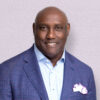
Also offered Monday at 1:30pm
“All the world’s a stage, and all the men and women merely players”, wrote Shakespeare. Leaders often step onto stage – to present an idea, influence a decision, ask for more resources, or inspire others to action – and these experiences require practice, poise, presence, and purpose. This session aims to understand what separates a good from a great speaking engagement and offers tangible skills to strengthen your public presence. These skills are not only useful for large presentations with dozens or hundreds in the audience but also for smaller gatherings, client meetings, team huddles, and other crucial business interactions where public speaking can be a difference maker. Not only will this session focus on outward-facing skills but will also help connect a leader’s public presence with their own authentic self. While some might argue that strong public speakers possess this skill innately, this workshop will prove otherwise as we demystify the building blocks of public speaking and train ourselves to strengthen our own engagement with audiences. By learning to be more “present,” participants will understand how to be more motivational as a leader, more convincing as a negotiator and more open and honest as a team member. This workshop develops and utilizes a practical toolkit for leaders to continue working on their public speaking and their ability to communicate their vision and their story long after the workshop has ended.
Learning Objectives:
Quinn Bauriedel

CFP®, CIMA®, CPWA®, CIMC®, and RMA℠ Eligible
Economies and markets globally are impacted by the policy actions of Central Banks, especially the U.S. Federal Reserve System (FED). Perhaps this has never been more true than in the recent years of major volatility. The U.S. and global economies were growing steadily, and financial markets were at or near record highs in February 2020, then along came the global COVID pandemic. Unemployment skyrocketed in the US and some other major economies. Certain industries, such as airlines and restaurants, would have collapsed without government subsidies.
Many Central Banks set maximum targets for inflation. For the US and many other nations their Central Banks set this maximum target at 2%. There is no theoretical reason why 2% was chosen; indeed, some leading economists are calling for a higher target such as 3%. Since COVID appeared, worldwide inflation jumped well above 2%, as it was boosted by expansionary monetary policies that aimed to help economies recover from the pandemic’s steep blow. Worldwide inflation was exacerbated by the supply chain problems stemming from the COVID restrictions by China and other major exporters, and the unprovoked Russian invasion of Ukraine.
Central Banks such as the FED have a predominant influence on interest rates, which have major impacts on economies and financial markets. Even before the worldwide economic recession (essentially, the decline was so steep that it could be termed a short depression) in Spring 2020, caused by pandemic lockdowns, many Central Banks had somewhat expansionary monetary policies. Pre-COVID some nations had slow economic growth and low inflation rates. Thus, their Central Banks engineered low, and in some cases in Europe and Japan negative, interest rates.
Monetary policy in most nations became much more expansionary or “loose” to help economies recover after the pandemic led to record unemployment in April 2020. The FED slashed interest rates to near zero. The FED along with Central Banks in Europe, Canada, and Japan launched massive Quantitative Easing (QE). QE is a strong and steady ballooning of the FED’s balance sheet, as it buys Treasury Securities and mortgage-backed securities from banks. To pay for these securities (asset) purchases, the FED increased banks’ deposits at the FED (the FED’s liabilities). Banks’s deposits at the FED are called their reserves, and with more reserves banks could expand the supply of credit. Essentially, by purchasing bonds and creating bank reserves the FED expanded the money supply, a process called the money multiplier. The goal was to spur economic recovery. This was successful.
The problem was that the massive expansion of credit and near-zero interest rates led to investors rushing into stocks, real estate, and cryptocurrencies (this portfolio shift was colloquially termed “there is no alternative” or TINA). Seeing other people gain wealth, others jumped in (termed “fear of missing out” or FOMO) and the US had asset price inflation.
Consumer price inflation was also rising, then the Russian invasion exacerbated it greatly by increasing global prices of energy and food. The FED has a dual mandate to maximize employment subject to keeping inflation low and steady. The FED monitors key variables related both to the job market and to inflation. We will analyze different gauges on the Federal Reserve’s “job market dashboard” and its “inflation dashboard.” Pre-pandemic the U.S. exceeded ‘full employment’ as commonly defined and measured by the unemployment rate. Of course, the pandemic led to massive underemployment globally. We will analyze various forms of underemployment. Next, we portray the improving job market from the trough in April 2020 until now.
Our analysis of the “job market dashboard” and the “inflation dashboard” will highlight metrics which are crucial for the FED’s decisions about interest rates. These decisions have a strong influence on financial markets. We will discuss the recent path and forecasts for inflation and unemployment, given the FED’s targets.
The FED has succeeded in maximizing employment. However, inflation skyrocketed far above its 2% target. Thus, in Spring 2022 the FED started a continuing series of interest rate increases. The FED did this more aggressively than other Central Banks. This meant that interest rates in the US exceeded those in other advanced economies. Money flowed into the US to gain these higher yields. To receive the yields on assets denominated in US dollars, foreign individuals and institutions had to buy dollars, appreciating their foreign exchange value. A positive aspect of this is that it made imports cheaper, which pressured inflation downwards. A negative is that a more expensive dollar could increase the already massive US trade deficit.
This session will engage participants in analyzing the current state and prospects for monetary policy. This will enable participants to explore the future of economies and financial markets.
Learning Objectives:
Jeffrey Rosensweig

Pre-Class Assignment – Assessment
CIMA®, CPWA®, CIMC®, and RMA℠ Eligible
Also offered Wednesday at 3:20pm
(Previously titled Playing to Your Strengths)
Your reputation precedes you. How do others see you at work? Are you perceived as cool, calm, and collected? Emotionally expressive? Competitive? A team player? Sociable? Independent? A people person? Task-focused? Conscientious? Willing to take a risk? Imaginative? Practical? Do you seem to prefer formal education or hands-on learning? How do these perceptions about you play out when you face an issue, problem, or adversity at work? What consequences do they have for better or worse? Complete the Hogan Personality Inventory as pre-work, and this session will give you the opportunity to see yourself as others see you, reflect on your strengths, and consider how to make the most of strengths and downplay liabilities.
Learning Objectives:
Anne Greenhalgh

1:30pm – 4:50pm
Also offered Monday at 1:30pm
Recent academic work on the science of innovation and creativity has revealed a new, evidence-based approach to coming up with new ideas and solving problems – but it is one that is not widely known outside of academia! In this session, we will first discuss these new approaches to innovating, including a number of simple tips and common mistakes. Then, in the second half of the session, you will play the Breakthrough Game, which allows you to apply the tools you learned to use in a fun and engaging way. Playing the Breakthrough Game, participants not only solve one particular challenge as a team but also, crucially, learn how to drive the innovation process in the future.
You will come out of this session with short-term takeaways that will make your future idea generation sessions more productive, an actionable idea that you can pursue, and a general framework that you can use to solve problems and search for new opportunities.
Jacqueline Kirtley

CIMA®, CPWA®, CIMC®, and RMA℠ Eligible
Pre-Class Assignment – Brief Exercise
In this session we will explore the art and practice of coaching for growth, including applicable skills for the workplace, using a dynamic and interactive examination of the topic. Leaders aspiring to make a difference and achieve impactful outcomes, guide others to maximize their potential by fostering engagement, excitement, and accountability. They do so by supporting actions toward goals in ways that encourage tapping into others’ abilities to enhance outcomes. A key process for doing so is coaching. This hands-on session begins with a brief overview of why and when leaders use coaching, along with introducing a practical coaching model. Through interactive exercises, participants actively develop and practice coaching skills, with the added benefit of receiving valuable feedback. The session concludes with a comprehensive debrief, including how to maximize coaching opportunities when you are the coaches.
Learning objectives:
Dafna Eylon

CIMA®, CPWA®, CIMC®, and RMA℠ Eligible
The session will focus on how leaders can build high flying teams that enable them to implement their strategies successfully, with special attention to the challenges of managing teams that are dispersed, diverse, digital, and dynamic. We will introduce a tool for analyzing your own teams, the Team Effectiveness Pyramid, and work through how to use this tool to diagnose your teams and figure out how and where to intervene to make them stronger.
Martine Haas

3:20pm – 4:50pm
Pre-Class Assignment – Exercise
The reality is that nobody likes conflict very much. Of course, there are those who thrive on conflict, but most managers would prefer to avoid it. And too often they do just that—to the detriment of those involved.
This session will teach participants how to manage conflict. They will learn a specific conflict resolution model and the skills that make it work. And they will practice each step to ensure that they understand how to apply the skills. They will also learn how to apply these skills in virtual or remote conversations.
Participants will learn how to acknowledge concerns and issues with empathy and understanding. They will explore how to get the others speaking to understand what the real issues are. And they will be introduced to the art of reframing in order to problem solve effectively and resolve the issues.
Avoiding conflict is not what leaders do. They resolve it as quickly as possible and this session will introduce participants to the skills, models and techniques to do this effectively.
Learning Objectives:
Eric Baron

Pre-Class Assignment – Brief Exercise
This session presents a novel approach to thinking about contemporary leadership challenges. The early years of the American Revolution present a spectacularly rich tapestry of leadership challenges and issues that inform today’s leaders. By anchoring the leadership lessons in historical vignettes, re-examining several myths, and connecting leader challenges to today, the session helps make learning leadership “sticky,” memorable, and useful to modern leaders and managers. As Mark Twain is attributed to have written, “History doesn’t repeat itself, but it often rhymes.” Participants in this session will be expected to do select readings and “play” key Revolutionary War leaders in class discussion about the contemporary leadership lessons gleaned from important decisions and events. The presenter is a retired Army major general who was president of the US Army War College, a recent resident lecturer at Harvard Kennedy School, and now a leadership consultant with numerous S&P 500 companies.
Learning Objectives:
William Rapp
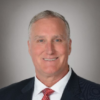
Research from Google’s best-performing teams suggests that among many factors that contribute to the health of a team, the most important lever is the presence of “psychological safety”. Drawing upon current research– from Google, MIT and other organizations — we will explore what psychological safety means, why it’s so important, and what you, as leaders can do to create the conditions for it on your teams.
Though we may believe we are creating the conditions for collaboration to occur, we may inadvertently undermine psychological safety – often fueled by our own emotional immaturity. So, in addition to exploring what you can do to create psychological safety, we will also discuss the barriers within you that may get in the way. What is most required is that we practice “growing up at work”.
What’s at stake is a more collaborative team environment, as well as greater engagement and aliveness for all.
Learning Objectives:
Yael C. Sivi

Pre-Class Assignment – Reading
CIMA®, CPWA®, CIMC®, and RMA℠ Eligible
Also offered Thursday at 1:30pm
Creating a good business case is necessary to help leaders make good decisions on allocating resources. A good business plan is also a blueprint for success. This module will explain the key elements of a business case and discuss how to evaluate and measure business impact. Four key elements such as the market and business opportunity, link to competitive advantage, communicating a business / economic / operating model and ability to implement will be discussed. A shark-tank like exercise will be used as a case exercise to give practice on developing executive summaries of ideas to be funded. We will also explore the concept of risk to understand and communicate the uncertainties of a business case using a real world case example. This will be a practical session focused on the qualitative elements that can be used to better inform and evaluate the business cases you submit and review.
Joseph Perfetti

CIMA®, CPWA®, CIMC®, and RMA℠ Eligible
Also offered Thursday at 8:45am
Did you ever wonder how the firm you work for makes money? Have you listened to your Chief Financial Officer talk about the quarterly earnings, and walk away scratching your head? This introductory session developed for those without a financial background takes a simplified look at where the money comes from and where it goes to determine the profit (loss) announced in that last quarterly report. Focusing on financial services firms, we will look at the businesses of our industry and how they drive the core operating activities. In layman’s terms we will break down the income streams and expenses taking the jargon out of financial reporting. If you would like a simple explanation of “ratios” like EBITDA, EPS, ROI, RWC and buzz words like Tier 1 Capital, deferred tax assets and non-counterparty risk, then this is the session for you.
Following this session, you will be able to:
This way, the next time your firm reports earnings, you will be able to understand the rhetoric, the balance sheet, and the income statement, making you a better-informed employee.
Gerald Schreck

Pre-Class Assignment – Survey
This session focuses on a strengths-based approach to leadership at and outside of work. Using tools developed through decades of research, hundreds of peer-reviewed studies, and millions of surveys, this body of knowledge is unique and provides answers to questions like who do I need to be? and what does it mean to come from a position of strength? Focusing on what is wrong, areas of weakness, or things that need to be improved can only take us so far, combined with what’s working well, our strengths, we can harness a lot more potential. This session takes a deep dive into the language of strengths and how to apply them.
Participants will learn:
Faisal Khan

Pre-Class Assignment – Assessment
CIMA®, CPWA®, CIMC®, and RMA℠ Eligible
Also offered Wednesday at 1:30pm
(Previously titled Playing to Your Strengths)
Your reputation precedes you. How do others see you at work? Are you perceived as cool, calm, and collected? Emotionally expressive? Competitive? A team player? Sociable? Independent? A people person? Task-focused? Conscientious? Willing to take a risk? Imaginative? Practical? Do you seem to prefer formal education or hands-on learning? How do these perceptions about you play out when you face an issue, problem, or adversity at work? What consequences do they have for better or worse? Complete the Hogan Personality Inventory as pre-work, and this session will give you the opportunity to see yourself as others see you, reflect on your strengths, and consider how to make the most of strengths and downplay liabilities.
Learning Objectives:
Anne Greenhalgh

CFP®, CIMA®, CPWA®, CIMC®, and RMA℠ Eligible
Ideal for: Participants who would like to get familiar with the private equity industry, learn the anatomy of a deal, industry trends, and understand the sources of value creation and the drivers of return of private equity funds.
Private equity is an asset class that has the potential to generate sustainable long-term returns for its investors. Although it is a relatively new asset class with some unique characteristics that may not be familiar to investors, it has become a key component of many investors’ portfolios. In this entry-level elective session, we will cover the structure of a private equity fund and describe how a private equity fund operates and governs its portfolio companies. We will talk about the changing trends in the private equity industry. We will also discuss whether and how a private equity fund creates value in a changing macroeconomic landscape.
Burcu Esmer

Also offered Tuesday at 3:20pm
(Previously titled Strategies for Life Success)
When individuals understand how to get the best out of themselves, they can draw out the best in their team members and peers. Regrettably, most people fail to invest time to be self-reflective and create meaningful goals and then hold themselves accountable for progress towards those goals. In this session we will review the fundamental elements of creating a more happy, balanced, and successful life.
Learning Objectives:
John Spence

In this course we will examine sustainability and ESG, two of the most significant current trends in financial services. The class will explore what ESG and sustainability are and…
In this course we will examine sustainability and ESG, two of the most significant current trends in financial services. The class will explore what ESG and sustainability are and the opportunities and risks they pose for financial services firms. The discussion will include commercial, regulatory and policy risks and opportunities. With billions of assets pouring into this space, financial service professionals need to understand both the meaning and implications for them and their firms.
Keir Gumbs
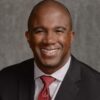
CFP®, CIMA®, CPWA®, CIMC®, and RMA℠ Eligible
The worst thing an investor can do is allow their emotions to become their portfolio’s worst enemy. Since fear is frequently a greater motivator than greed, how can an investor extract their emotions from the equation and continue to be appropriately allocated? Investing is a journey. By being forewarned of potential hazards ahead, through an understanding of stock market seasonality, cycles, and recovery characteristics, even the more cautious investor can leverage history to help calm their nerves and stay the course.
Learning Objectives:
Sam Stovall

CIMA®, CPWA®, CIMC®, and RMA℠ Eligible
You can’t lead without followers, but getting them requires more than your charisma, talent, and authority. Followers are also driven by their own powerful psychological motivations which are often ignored in business settings. In this session, participants will learn about the power of transference, or the emotional glue that binds leaders and their followers. Transference comes in many guises and is also subtle in its workings. Learning to identify transference in professional settings will bring you one step closer to building better relationships and achieving goals. As a result of participating in this session, you will also have an opportunity to take a personality test which provides clues about your own behavior patterns and how this might impact opportunities given to you in the workplace.
Sudev Sheth

CFP®, CIMA®, CPWA®, CIMC®, and RMA℠ Eligible
With limited other resources, clients are turning to their financial professionals for advice on Social Security. Advisors who can provide education and guidance on Social Security as part of the retirement planning process are more likely than their peers to retain retiring clients, grow share of wallet and gain referrals.
Learning Objectives:
Robert Kron

7:15am – 8:15am
8:45am – 10:15am
CIMA®, CPWA®, CIMC®, and RMA℠ Eligible
Also offered Tuesday at 3:20pm
The skills to manage mental illness are different than the skills needed to cultivate well-being. This session focuses on 5 research-based skills that anyone can use to cultivate well-being and take a proactive approach to preventing mental stress and illness. While Employee Assistance Programs focus on issues that people have at the workplace, there are little resources available for those of us who do not have issues however wish to harness their well-being and resultantly their performance. The 5 skills discussed in this session are ones that can be immediately practiced, applied, and taught to others. These skills capitalize on our mental, emotional, and behavioral attributes so participants learn to harness their own resources to feel better, function more effectively, and increase their well-being.
Participants will learn:
Faisal Khan

Pre-Class Assignment – Reading
CIMA®, CPWA®, CIMC®, and RMA℠ Eligible
Also offered Monday at 3:20pm
You can’t drive a car looking in the rear view mirror. Traditional metrics are backward looking. They keep score. What did you do last month, last quarter and last year? Companies need to keep score to assess performance: growth, margin, return on equity, and total shareholder return are common metrics. They do not tell you how the company will do in the future. Value is about the future. In the age of agile, companies need to increasingly start putting forward looking and predictive metrics on their dashboards. The Agile Dashboard was researched and developed to help organizations address this gap. The Agile Dashboard looks at three categories of metrics: Speed, Interaction Time and Pivot. These are critical elements for leaders to monitor whether their organizations are prepared to operate successfully in an uncertain future. This session will explain each of the three sections of the Agile Dashboard, provide metrics for each and share examples of their applicability to financial organizations.
Joseph Perfetti

CIMA®, CPWA®, CIMC®, and RMA℠ Eligible
Also offered Thursday at 3:20pm
Thriving at work, high life satisfaction, happiness and resilience all require the same capacity: the capacity to navigate difficult moments well. Our conversation considers research from the fields of Positive Psychology and Appreciative Inquiry, fields which examine who we are at our best as individuals, teams and organizations. We’ll explore tools and perspectives that enable us to handle inner conflict, difficult conversations and moments of extraordinary stress wisely. These are tools that bring mindful awareness to any one moment and change that moment into one of opportunity; opportunity in which we not only address the stressor directly, but leverage that very conflict to become more authentic, more rooted in our strengths and values, more clear about the road ahead and more of our better selves. In other words, better leaders. Attendees will leave with experience practicing mindful pausing, identifying one’s ideal self, and leveraging positive change in themselves and others in the most challenging moments.
Learning Objectives:
Maria Sirois

CIMA®, CPWA®, CIMC®, and RMA℠ Eligible
Going beyond a narrow focus on product or service innovation, this session will highlight the importance of thinking through the overall system of activities that a company uses to create, deliver, and capture value; i.e., its business model. After defining the business model concept and discussing its component parts, we will discuss how innovative models can function as a source of advantage that is hard for competitors to understand and imitate. The session will also introduce tools that leaders can use to map their organization’s current business model and think-through opportunities to innovate in ways that can unlock value without (necessarily) altering the firm’s core product or service mix. We will then discuss key questions that leaders should ask as they consider if and when to pursue various innovation opportunities. Throughout, the conversation will anchor on examples of firms that built their competitive position around innovative new business models, and others that updated existing their models to thrive in the face of competition and uncertainty.
Learning Objectives:
Tyler Wry

Pre-Class Assignment – Reading
CIMA®, CPWA®, CIMC®, and RMA℠ Eligible
Also offered Thursday at 1:30pm
The old saying that change is the only constant seems truer than ever. How can we help our organizations not only survive, but thrive in moments when volatility and uncertainty threaten to derail even the best-laid strategic plans? In this session, we will learn practical strategies for building resilience, drawn from timeless social science insights about human behavior, and applied to current, real-world business challenges. We will explore resilience at three levels: 1) Building individual resilience in the self and others to weather challenging moments; 2) Building team resilience to keep people motivated and engaged to solve complex challenges; 3) Building organizational resilience to maintain the adaptability and innovative habits needed to stay ahead of the curve. Through a combination of evidence-based frameworks, engaging group activities and dialogue, this session will help participants at any level of the organization build and maintain grit and agility.
Derek Newberry

CIMA®, CPWA®, CIMC®, and RMA℠ Eligible
Also offered Thursday at 3:20pm
Hybrid working arrangements can be daunting for those about to adopt them and challenging for those who already have. But the good news is that we’re learning quickly where the biggest obstacles lie and how to minimize them in advance and manage them as they come up. The most common challenges related to hybrid work fall under the “5C challenges”: communication, coordination, connection, creativity, and culture. In this session, we will start by understanding the five challenges, use a 5C’s checklist to assess where you’re at and where to go from there. The checklist is designed to help leaders tackle and prioritize the most common challenges of hybrid working.
Martine Haas

CIMA®, CPWA®, CIMC®, and RMA℠ Eligible
Diversity, Equity and Inclusion (DEI) crosses a broad spectrum of ethnicities, gender identity, perspectives, etc. We are continuously evolving in our ability to meet the needs of our workforce and organizations as we leverage DEI as a business/national competitive advantage.
Artificial intelligence will significantly impact our organizations and capabilities in a constantly evolving environment. What is our role in defining and implementing responsible AI?
The course agenda includes:
Janie L. Mines

Pre-Class Assignment – Reading
CIMA®, CPWA®, CIMC®, and RMA℠ Eligible
In many industries today, and especially in finance, organizations operate in ecosystems made up of powerful and highly interconnected stakeholders. Companies that figure out how to manage this complexity will enjoy a powerful competitive advantage in finding and selecting innovations. Participants will be introduced to a tool-based ideation process that helps them think through ways of innovating their companies’ product or service offerings. The methodology allows managers to identify innovation growth opportunities and select insightfully among them, thus ensuring that the company is responsive not only to the pressing needs of the direct customers, but also to the needs and concerns of the other stakeholders in its ecosystem. The session will conclude with a workshop that allows participants to apply the tools to their industry.
Learning Objectives:
Martin Ihrig

CIMA®, CPWA®, CIMC®, and RMA℠ Eligible
Pre-Class Assignment – Survey
We all think of ourselves as good people, yet ethical lapses are common. Why? In this session, Professor Nina Strohminger takes participants on a crash course of the science behind (un)ethical behavior. The session will take an especially close look at the role played by forces we are usually unaware of. After learning about the major sources of ethical blindness, Strohminger will outline the best strategies for combatting it—from the individual to the organizational level—drawing on cases from the industry.
Nina Stohminger

CIMA®, CPWA®, CIMC®, and RMA℠ Eligible
Also offered Wednesday at 3:20pm
Did you ever wonder how the firm you work for makes money? Have you listened to your Chief Financial Officer talk about the quarterly earnings, and walk away scratching your head? This introductory session developed for those without a financial background takes a simplified look at where the money comes from and where it goes to determine the profit (loss) announced in that last quarterly report. Focusing on financial services firms, we will look at the businesses of our industry and how they drive the core operating activities. In layman’s terms we will break down the income streams and expenses taking the jargon out of financial reporting. If you would like a simple explanation of “ratios” like EBITDA, EPS, ROI, RWC and buzz words like Tier 1 Capital, deferred tax assets and non-counterparty risk, then this is the session for you.
Following this session, you will be able to:
This way, the next time your firm reports earnings, you will be able to understand the rhetoric, the balance sheet, and the income statement, making you a better-informed employee.
Gerald Schreck

Pre-Class Assignment – Reading
Why do some individuals gain support for their ideas in meetings, while others seemingly languish? At the core of any organization’s performance are the decisions that leaders make…those financial, strategic, human resource, marketing and leadership decisions that underlie an organization’s performance. Understanding how to improve decision-making is a truly fundamental leadership requirement. In this session, we will explore typical decision “traps”–those biases in large part determined by how the human brain operates. Drawing on recent research, this session will expose participants to decision biases through short exercises and offer ways to alleviate them.
Learning Objectives:
Jim Austin

Pre-Class Assignment – Assessment
Also offered Thursday at 1:30pm
The Herrmann Brain Dominance Instrument (HBDI™) is a 120-question diagnostic survey, the answers to which indicate an individual’s thinking style preferences. Our minds have preferred modes of operating that impact how we see the world, how we interpret what we see, and how we communicate with others who are also operating from their own preferred modes of thinking and speaking. Thinking preferences influence communication, decision-making, problem solving, and management styles. By understanding their thinking style preferences, participants will gain a new perspective of themselves and the people with whom they interact each day. In this HBDI session, a series of interactive exercises is used to get participants comfortable with the model, conversant about each of the 4 styles, and aware of the dangers of over-simplifying the process. This session offers a wide range of exercises and will choose a combination of exercises specific to each group’s needs. Participants will also explore when thinking styles are problematic. Through development of self-inventory, participants will learn about their own hot buttons and the hot buttons of others and develop strategies for addressing these situations in a constructive manner. During the program we also address the effects of individual and team HBDI data on some main leadership issues of our time, like enhancing our agility and creative thinking in times of fast pace change and ambiguity. This course will require a 120-question survey to be completed prior to the participants’ arrival.
Learning Objectives:
Chuck McVinney
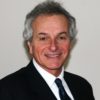
CIMA®, CPWA®, CIMC®, and RMA℠ Eligible
Pre-Class Assignment – Short Survey
Also offered Thursday at 1:30pm
Today, each leader and group of leaders collectively co-create the psychological environment of safety inside their teams, their top performers, and their internal followership in day to day decision making – be it in crisis or beyond. Such environments foster the sustainable models of personal accountability & practicing foresight in decisions.
Organizations today are on the constant testing grounds of Trust, Foresight, and Empathy across internal and external stakeholders, where lived experience of leadership values alone attest for credibility.
The time-tested concept of the 7 levels of Ascending Leadership allows the organizational leadership and followership to create growth ladders while activating a unique Cultural Intelligence (CQ). Cultural intelligence (CQ) is that secret trait enables organizations to anticipate, adapt, pivot in response to fluid environments, and is often an overlooked opportunity (resulting hindsight regret) in complex times.
Amrita Subramanian

Pre-Class Assignment – Video Documentary (1 ½ hours)
Over 100 years ago, 28 adventurers were stranded for nearly two years in Antarctica. Incredibly, they all survived. Their story and that of their leader, Ernest Shackleton, evidence many of the now recognized best practices for leading through challenging times. This session explores the story of Shackleton’s expedition, mining it for illustrations of best practices for today’s leaders trying to lead through current challenging times.
Session Design: This session is highly participative and potentially very free flowing. The richness of the case and the breadth of its implications for leading through challenging times argues for focusing on the material that session participants deem most appropriate. Hence, the session relies extensively on participant questions. Pre-work will markedly increase participant ability to focus questions on case-based areas of most interest and, likely, of most use to them.
Gregory Shea

CFP®, CIMA®, CPWA®, CIMC®, and RMA℠ Eligible
This is a session that covers recent developments in global economic growth and innovation, with an emphasis on current events and policy applications. The session discusses the current drivers of innovation and economic growth and analyzes the strengths and challenges of financial analysis for long-term innovative investment decisions. Topics covered include: national income accounting, total factor productivity, investment in capital and labor, inflation, interest rates, monetary policy, net present value and the internal rate of return.
Learning Objectives:
Jules Van Binsbergen

CIMA®, CPWA®, CIMC®, and RMA℠ Eligible
Organizations are increasingly turning to data and analytics to improve how they manage people. Those analytics can provide new insights into drivers of employee performance, engagement, and attrition, allowing the development of better-informed people strategies. In this session, we explore how organizations can leverage data to inform their people decisions, discuss case studies of the successful use of analytics, as well as examining the limitations of data-informed decision-making.
Matthew Bidwell

CIMA®, CPWA®, CIMC®, and RMA℠ Eligible
Also offered Thursday at 1:30pm
No matter how impressive an analysis is, or how high-quality your data are, it is unlikely to compel change unless stakeholders for your work understand what you have done. Some of the stakeholders may not understand all the details of the analytics but they do want evidence of the analysis. This is where stories based on data and analytics become more convincing than those based on anecdotes or personal experience. In this session, participants will explore how analytics can be translated into a narrative story. This session will build on the live case, which will be continuing throughout the program. Participants will learn how to take results of a rigorous analysis and develop stories that are effective tools for conveying insights.
Raghuram Iyengar

The Teamwork simulation is an interactive, hands-on group activity. The brief description below is vague on purpose to not give too information and cloud the onsite experience. This simulation is done in 2-parts. Participants will go through the simulation then have a debrief session later in the day. The simulation and debrief sessions will be linked on the registration form. When signing up for this simulation you will automatically be assigned to the debrief session at 3:20pm.
Here’s past feedback from previous SII participants:
“Loved this, very engaging and informative!”
“Sudev is the best facilitator I have encountered. He was extremely knowledgeable, observant, and engaging. This could have been a 3 part because the debrief was so engaging.”
“Professor was incredibly engaging, very attentive and encouraged class participation. This double session was most definitely at the top of my list.”
“Great session. So interesting and challenged my thinking about teamwork and managing through situations.”
“I really took away a lot from this simulation and it was a positive team environment where you learn by doing.”
“It’s so great that we spent dedicated time to debrief and learn from the team exercise. I found the real power is learning through where we failed.”
This simulation explores underlying individual and group dynamics when working in a team tasked with accomplishing goals. How do you effectively solve problems and make decisions when thrown difficult and unexpected challenges? By participating in this interactive session, you will experience firsthand how decision making by leaders and team members affects team performance in situations characterized by time pressure and competition.
Sudev Sheth

CIMA®, CPWA®, CIMC®, and RMA℠ Eligible
Pre-Class Assignment – Optional Reading
Also offered Thursday at 1:30pm
Each of us is born with our own, unique DNA, and that DNA provides clues about who we are, where we came from and relationships we share. Have you ever thought about your leader DNA? Most of us do not take the time to thoughtfully discover our personal leader identity. In this course, General Halstead will lead an interactive discussion on how to intentionally, deliberately, and introspectively look inward in order to more effectively understand and define yourself as a leader. She will take you through a values exercise to help narrow your focus on what really are the most important values that define who you are, what you believe, where you invest your personal energy and how you execute. Values are not mere words; they must be defined, lived out and shared. Given the premise that life is a journey, we can also say that our development as a leader is a journey. General Halstead will share some of her own journey as she prepared for a year in Iraq, knowing it would be the cumulative years of growing as a leader that would make the difference on how she would survive and thrive in combat, and lead her team from good to great on the battlefield. She will devote reflective time in the session for participants to focus on the major turning points (personal/professional) that have helped shaped their leader identity, and share them with each other. Our individual values, aligned with our behaviors and turning points, shape our leader identity and our purpose as a leader. Throughout the session, General Halstead will share effective leadership tools she used in her almost 3 decades of military service, and that she now provides across the corporate and academic sectors.
Learning Objectives:
Rebecca Halstead

10:35am – 12:05pm
Also offered Tuesday at 10:35am
The culture of your organization determines its long-term success. A positive workplace culture attracts top talent, drives engagement, fosters teamwork, and increases retention. Culture is what makes strategy happen. Culture also plays a significant role in how your customers view you. Better business results start with a more robust organizational culture.
However, a great culture does not happen by chance. It must be carefully designed and continuously nurtured. Although every organization will have unique aspects of culture, a handful of fundamental ideas are essential to creating a vibrant culture.
Learning Objectives:
John Spence

Pre-Class Assignment – Videos with Multiple Choice Questions
CFP®, CIMA®, CPWA®, CIMC®, and RMA℠ Eligible
Also offered Tuesday at 10:35am
In this YI core course Professor Tiffany reviews the historical evolution of the American economy from the beginnings of the Republic up until the present day (participants will be assigned to one of three identical class sessions).
Pre-Program Videos: The course will start with three short videos, available for participant viewing prior to the sessions in Philadelphia. These required videos—approximately 30 minutes each– will provide background content so that the live session can focus on key issues and provide time for participant discussion. Following viewing, all participants will be required to respond to multiple-choice questions and submit their results to the SII Team. We will review responses in the sessions at Wharton.
Video I “Foundations” will begin with an emphasis on the foundations for future economic growth that were created at the beginning of the Republic, and which will take us up to 1865. In this we will emphasize how America differs from essentially all other nations of the world with its direct focus on individual property rights that were to be exercised in a capitalist market economy— rights captured in the Constitution– that continue down to the present time, and which in many respects continues to define the nation’s political issues. We then discuss the creation of the economic infrastructure that paved the way for the post-Civil War industrial boom.
Video II “The Rise of ‘Big Business’” will cover the period following the Civil War up through outbreak of World War II. By the end of the 19th Century a set of critical trends converged that were to shape the emergence of an economy dominated by the large industrial firm. This period is often characterized as the “Robber Baron” era of “creative destruction” and in which the entrepreneurial “Schumpeterian Hero” leveraged new technologies that profoundly transformed America and laid the groundwork for the nation’s global economic dominance in the 20th Century. Yet as the large firms prospered and America transformed into an industrial giant, another set of conditions began to arise that would challenge the hegemony of the corporation as the dominant institution in American life—that is, the Great Depression. Only a devastating global war brought this event to a close, and with it new restrictions on the relationship between business and government.
Video III “The ‘American Century’—and Beyond” will bring the discussion up to the present time. We will first review how the US economy reacted to the demands of another global war, and then how the outcome of that conflict set the stage for the emergence of the so-called “American Century” and the nation’s remarkable economic growth and prosperity up to the 1970s. Yet it was at this point in time that underlying problems began to surface, even though a second “Schumpeterian Era of Creative Destruction” was creating the “new economy” of technology-dominated businesses in the latter decade of the 20th Century. More significantly, the simultaneous advent of “globalization” that emerged in full by the start of the 21st Century began to threaten US world economic dominance, through the rise of China and other emerging nations—and a growing disparity in the financial returns from globalization that found fewer and fewer people gaining more and more of the benefits. The central issue we will discuss here: can the US sustain “the American Century” of global economic dominance going forward– or is it some other nation’s turn to lead?
March class: This will provide a forum in which all participants will be encouraged to offer their own perspective on key issues in US business and economic history and their implications for the future. The session will begin with (a) Professor Tiffany’s explication of five key take-aways from his video commentaries, (b) a review of participant response totals from the mandatory questions, (c) brief sharing by participants of ideas and insights with classmates, and (d) an open-mic discussion about where we go from here.
Learning Objectives:
Paul Tiffany

12:15pm – 1:15pm
Check your mobile app for location.
The only constant in life is change. Join Chris Perry, President of Broadridge, as he shares real-life stories of successful change drawn…
The only constant in life is change. Join Chris Perry, President of Broadridge, as he shares real-life stories of successful change drawn from more than 30 years driving transformations in the financial services industry. In this interactive discussion Chris will share lessons learned on the job as well as in his personal life. From the start of his career in front office wealth management software to his role today leading a global $25B market cap company serving 25,000 clients, Chris continues to be at the center of changes impacting how financial firms drive growth and innovate.
Chris Perry

1:30pm – 3:00pm
CIMA®, CPWA®, CIMC®, and RMA℠ Eligible
AI – from predictive technologies to Large Language Models like ChatGPT – are likely to significantly impact workforce needs in the coming years. This session briefly reviews the capabilities of these technologies, with an emphasis on understanding how they impact the demand for skills in jobs. We discuss the frameworks being used by policy makers, academics, and NGO’s to assess the types of jobs that will be in demand in an AI-driven future, and those that are likely to experience a decline. We will conclude with a transformation exercise in which we take common jobs in your industry and redesign them for an AI future.
Prasanna (Sonny) Tambe

Pre-Class Assignment – Reading
CIMA®, CPWA®, CIMC®, and RMA℠ Eligible
Also offered Thursday at 8:45am
The old saying that change is the only constant seems truer than ever. How can we help our organizations not only survive, but thrive in moments when volatility and uncertainty threaten to derail even the best-laid strategic plans? In this session, we will learn practical strategies for building resilience, drawn from timeless social science insights about human behavior, and applied to current, real-world business challenges. We will explore resilience at three levels: 1) Building individual resilience in the self and others to weather challenging moments; 2) Building team resilience to keep people motivated and engaged to solve complex challenges; 3) Building organizational resilience to maintain the adaptability and innovative habits needed to stay ahead of the curve. Through a combination of evidence-based frameworks, engaging group activities and dialogue, this session will help participants at any level of the organization build and maintain grit and agility.
Derek Newberry

Please note participants will be on their feet for most of the session.
In this experiential session, participants explore behaviors that improve collaborative relationships. The session introduces practical, applicable skills for increasing the ability to effectively communicate with others — to hear and be heard. The session is ‘serious play’ – fun exercises with powerful results.
Learning Objectives:
Throughout the session, participants experience a variety of activities, including exercises based in improvisational theater training. No one is singled out — all exercises are performed in large or small groups. The facilitator creates a comfortable atmosphere in which all participants are supported and encouraged. Every exercise is debriefed to maximize its application to the participants’ unique needs. The result is positive transformation of the participants’ communication skill-set.
Bobbi Block

CIMA®, CPWA®, CIMC®, and RMA℠ Eligible
Everybody tells you that you need to network to get ahead in life and business. They also tell you that you need to be more innovative and creative. But you typically get no advice or, worst, bad advice on how to do both of these things effectively. This session will help you realize how you can be wise about building and maintaining professional social networks to help you discover and develop novel ideas. It is meant to offer a foundation for getting the most out of the relationships you develop throughout your career.
Exequiel Hernandez

Pre-Class Assignment – Reading
CIMA®, CPWA®, CIMC®, and RMA℠ Eligible
Also offered Wednesday at 3:20pm
Creating a good business case is necessary to help leaders make good decisions on allocating resources. A good business plan is also a blueprint for success. This module will explain the key elements of a business case and discuss how to evaluate and measure business impact. Four key elements such as the market and business opportunity, link to competitive advantage, communicating a business / economic / operating model and ability to implement will be discussed. A shark-tank like exercise will be used as a case exercise to give practice on developing executive summaries of ideas to be funded. We will also explore the concept of risk to understand and communicate the uncertainties of a business case using a real world case example. This will be a practical session focused on the qualitative elements that can be used to better inform and evaluate the business cases you submit and review.
Joseph Perfetti

Pre-Class Assignment – Assessment
Also offered Thursday at 8:45am
The Herrmann Brain Dominance Instrument (HBDI™) is a 120-question diagnostic survey, the answers to which indicate an individual’s thinking style preferences. Our minds have preferred modes of operating that impact how we see the world, how we interpret what we see, and how we communicate with others who are also operating from their own preferred modes of thinking and speaking. Thinking preferences influence communication, decision-making, problem solving, and management styles. By understanding their thinking style preferences, participants will gain a new perspective of themselves and the people with whom they interact each day. In this HBDI session, a series of interactive exercises is used to get participants comfortable with the model, conversant about each of the 4 styles, and aware of the dangers of over-simplifying the process. This session offers a wide range of exercises and will choose a combination of exercises specific to each group’s needs. Participants will also explore when thinking styles are problematic. Through development of self-inventory, participants will learn about their own hot buttons and the hot buttons of others and develop strategies for addressing these situations in a constructive manner. During the program we also address the effects of individual and team HBDI data on some main leadership issues of our time, like enhancing our agility and creative thinking in times of fast pace change and ambiguity. This course will require a 120-question survey to be completed prior to the participants’ arrival.
Learning Objectives:
Chuck McVinney

CIMA®, CPWA®, CIMC®, and RMA℠ Eligible
Pre-Class Assignment – Short Survey
Also offered Thursday at 8:45am
Today, each leader and group of leaders collectively co-create the psychological environment of safety inside their teams, their top performers, and their internal followership in day to day decision making – be it in crisis or beyond. Such environments foster the sustainable models of personal accountability & practicing foresight in decisions.
Organizations today are on the constant testing grounds of Trust, Foresight, and Empathy across internal and external stakeholders, where lived experience of leadership values alone attest for credibility.
The time-tested concept of the 7 levels of Ascending Leadership allows the organizational leadership and followership to create growth ladders while activating a unique Cultural Intelligence (CQ). Cultural intelligence (CQ) is that secret trait enables organizations to anticipate, adapt, pivot in response to fluid environments, and is often an overlooked opportunity (resulting hindsight regret) in complex times.
Amrita Subramanian

Pre-Class Assignment – Reading
Most leaders are good at focusing on short-term requirements such as next quarter’s results or current competitor moves. The problem is that in times of change and uncertainty, short-term initiatives leave entities vulnerable to missing or underplaying dramatic market changes or emergent new competitors. Based on the work by Paul Schoemaker and George Day, as detailed in their recent book, See Sooner, Act Faster: How Vigilant Leaders Thrive in an Era of Digital Turbulence, this seminar will outline how vigilant leaders enable their organizations to:
Jim Austin

Pre-Class Assignment – Reading
On 9/11/01, a monumental tragedy ripped through the FDNY, one of the world’s most renowned fire departments. Leadership challenges abounded that day and deep into the future. The ongoing day to day challenges presented by serving so massive and complex a city as New York continued even as did the challenge of addressing first how to recover, then how to rebuild and finally how to renew over the coming months and, truly, years: Should the FDNY seek to restore what had been or should it build something different? Wharton faculty and leadership senior fellow Greg Shea and retired FDNY captain and 9/11 first responder Paul Brown draw on over 60 hours of interviews with retired FDNY leadership and FDNY 9/11 first responders. They offer learnings about moving through crisis and ‘carrying on’ to organizational renewal. The session will concentrate on participant questions and explore decisions, mindsets, and approaches taken by the FDNY, especially in those areas that participants see as most relevant to them in our post pandemic times.
Session design: The session is highly participative and potentially very free flowing. Participant questions will determine the focus of the session. The wealth of material and hard-won learnings captured in the research means that the session can move in any number of directions, again, depending upon participant questions. Reading several brief articles in advance will facilitate participants drilling down into those aspects of this story of potentially most consequence to them.
Paul Brown, Gregory Shea


CIMA®, CPWA®, CIMC®, and RMA℠ Eligible
Our thoughts heavily influence our behavior. Having deliberate frameworks to organize our thoughts
can thus help influence our behavior for the better. This session is a research-based introduction to such
frameworks. The skills learned in the module are a steppingstone to sustainable behavioral change,
supporting ways in which people can thrive despite adversity. The module targets three of the
researched mental frameworks that help build resilience, improve mental health, and help counter
stress. The techniques are also useful to those seeking to improve engagement at work. The hands-on
module is designed to help participants practice skills in class and leave with easy to use tools that can
be practically applied in their lives.
Module Overview:
| Module | Topic | Participants will learn to |
| 1 | Mental Agility:
· Practical frameworks · Resilient mindset
|
· Adopt easy to use tools to function with clarity of thought during challenging times
· Develop a resilient mindset to fight adversity and invite growth · Develop skills to adopt an optimistic outlook in the face of adversity
|
The module would be particularly useful for anyone who is having difficulty bouncing back from
adversity, facing stress, or has a hard time coping with work demands. The workshop is geared to
develop skills that are not traditionally taught in business curriculum, however, are necessary in business and personal life.
Faisal Khan

CFP®, CIMA®, CPWA®, CIMC®, and RMA℠ Eligible
This session will provide a mid-level treatment of ETF’s. After a review of ETF’s, the industry and its recent growth, the session will review recent development. Covered will be a discussion of Active ETF’s, factor-based ETF’s, Index-Mining and back testing, ETF’s and the availability of Alpha, ETF cost of ownership and trading, and the effects of ETF growth on markets. The session will conclude with a view of the future in the industry.
Christopher Geczy

CIMA®, CPWA®, CIMC®, and RMA℠ Eligible
Also offered Thursday at 8:45am
No matter how impressive an analysis is, or how high-quality your data are, it is unlikely to compel change unless stakeholders for your work understand what you have done. Some of the stakeholders may not understand all the details of the analytics but they do want evidence of the analysis. This is where stories based on data and analytics become more convincing than those based on anecdotes or personal experience. In this session, participants will explore how analytics can be translated into a narrative story. This session will build on the live case, which will be continuing throughout the program. Participants will learn how to take results of a rigorous analysis and develop stories that are effective tools for conveying insights.
Raghuram Iyengar

CFP®, CIMA®, CPWA®, CIMC®, and RMA℠ Eligible
In a world that calls out for repair, companies are increasingly called upon to engage in initiatives that deliver meaningful social impact. This session builds on a growing body of academic research that shows how firms can leverage these initiatives as a source of strategic advantage. After detailing the varied pathways that social initiatives can work through to benefit the firm—particularly among a younger generation of stakeholders who seek to integrate impact throughout their personal and professional lives—we will discuss sets of tools that leaders can use to more fully understand their company’s impacts and press the advantages that they create. The session will also touch on the unique challenges that firms face due to the growing polarization of many social issues, and how to navigate this potentially fraught landscape.
Learning Objectives:
Tyler Wry

Chris Maxwell’s research shows that world-class mountain guides embody six key leadership strengths, and that these same strengths have a significant impact when applied within organizations. From lessons learned from his travels with expert guides on mountain peaks and high trails around the world, Maxwell reveals that guides are socially intelligent, adaptable, empowering, trust-builders, risk-aware, and focused on the big picture. Organizational leaders who model these six leadership strengths will build more effective teams, actively support the vision of the organization, and uplift the people who work to make that vision a reality. Session participants will have an opportunity to reflect on the six leadership strengths of guides and complete a self-assessment. Chris’ book, Lead Like a Guide: How World-Class Mountain Guides Inspire Us to Be Better Leaders was published by Praeger in 2016.
Learning Objectives:
Chris Maxwell

CIMA®, CPWA®, CIMC®, and RMA℠ Eligible
Managing people effectively isn’t just about getting a few things right. It’s about having an overall vision for how you are going to build and buy a winning team, that also maps out why those people will want to come work with you, and stay working with you. And it’s about being able to deliver on that strategy. In this session, we will discuss the variety of different strategies that people follow, and work through the different approaches that might work in different kinds of settings. Through examples, discussions and exercises, we aim to help participants map out what success looks like in how they manage their people, setting up subsequent examination of how to implement their approach.
Matthew Bidwell

CIMA®, CPWA®, CIMC®, and RMA℠ Eligible
Pre-Class Assignment – Optional Reading
Also offered Thursday at 8:45am
Each of us is born with our own, unique DNA, and that DNA provides clues about who we are, where we came from and relationships we share. Have you ever thought about your leader DNA? Most of us do not take the time to thoughtfully discover our personal leader identity. In this course, General Halstead will lead an interactive discussion on how to intentionally, deliberately, and introspectively look inward in order to more effectively understand and define yourself as a leader. She will take you through a values exercise to help narrow your focus on what really are the most important values that define who you are, what you believe, where you invest your personal energy and how you execute. Values are not mere words; they must be defined, lived out and shared. Given the premise that life is a journey, we can also say that our development as a leader is a journey. General Halstead will share some of her own journey as she prepared for a year in Iraq, knowing it would be the cumulative years of growing as a leader that would make the difference on how she would survive and thrive in combat, and lead her team from good to great on the battlefield. She will devote reflective time in the session for participants to focus on the major turning points (personal/professional) that have helped shaped their leader identity, and share them with each other. Our individual values, aligned with our behaviors and turning points, shape our leader identity and our purpose as a leader. Throughout the session, General Halstead will share effective leadership tools she used in her almost 3 decades of military service, and that she now provides across the corporate and academic sectors.
Learning Objectives:
Rebecca Halstead

1:30pm – 4:50pm
Pre-Class Assignment – Brief Exercise
Emotional Intelligence (EI) is a critical component for effective leadership and a significant contributor to excelling in the workplace. The good news is, regardless of one’s starting point, we can improve EI skills and abilities by thinking intelligently about emotions and using emotions to better think intelligently. To this end, using exercises and clips, participants engage in learning, practicing, and improving each of the EI components, with the goal of better understanding how to improve reading, engaging and leading oneself and others for the long term.
Learning Objectives:
Dafna Eylon

Pre-Class Assignment – Reading
Everyone in strategy is saying that the key to growth, even just survival, is via continuous and rapid innovation. But the real key to growth via profitable innovation is the strategic development and management of your knowledge: the insights of your employees, your technology, your core competences, and your intellectual property. This session will provide you with the foundation from which to prosper in this, the knowledge age. It will give you specific tools and frameworks to map your critical knowledge, design a program to strategically develop your knowledge, and then exploit it to successfully grow your organization.
This is a double session which concludes with a workshop that allows participants to apply the tools to their industry.
Learning Objectives:
Martin Ihrig

Pre-Class Assignment – Assessment
CIMA®, CPWA®, CIMC®, and RMA℠ Eligible
Also offered Monday at 1:30pm
This workshop will help strengthen your influence and persuasion skills. Everybody needs these skills to build momentum for important initiatives, achieve organizational alignment, and implement strategies. Through a series of interactive discussions and role-plays, you will answer four key questions in this workshop: What are the steps that led to buy-in? What is your communication style and how do you use to engage stakeholders? How do you make your ideas simple and compelling? How do you generate lasting commitment? The workshop content is drawn from the book The Art of Woo: Using Strategic Persuasion to Sell Your Ideas (Portfolio/Penguin), co-authored by G. Richard Shell and Mario Moussa. This class will require pre-work to be completed prior to the participants’ arrival.
Learning Objectives:
Mario Moussa

3:20pm – 4:50pm
CIMA®, CPWA®, CIMC®, and RMA℠ Eligible
Also offered Thursday at 8:45am
Thriving at work, high life satisfaction, happiness and resilience all require the same capacity: the capacity to navigate difficult moments well. Our conversation considers research from the fields of Positive Psychology and Appreciative Inquiry, fields which examine who we are at our best as individuals, teams and organizations. We’ll explore tools and perspectives that enable us to handle inner conflict, difficult conversations and moments of extraordinary stress wisely. These are tools that bring mindful awareness to any one moment and change that moment into one of opportunity; opportunity in which we not only address the stressor directly, but leverage that very conflict to become more authentic, more rooted in our strengths and values, more clear about the road ahead and more of our better selves. In other words, better leaders. Attendees will leave with experience practicing mindful pausing, identifying one’s ideal self, and leveraging positive change in themselves and others in the most challenging moments.
Learning Objectives:
Maria Sirois

CIMA®, CPWA®, CIMC®, and RMA℠ Eligible
Also offered Thursday at 8:45am
Hybrid working arrangements can be daunting for those about to adopt them and challenging for those who already have. But the good news is that we’re learning quickly where the biggest obstacles lie and how to minimize them in advance and manage them as they come up. The most common challenges related to hybrid work fall under the “5C challenges”: communication, coordination, connection, creativity, and culture. In this session, we will start by understanding the five challenges, use a 5C’s checklist to assess where you’re at and where to go from there. The checklist is designed to help leaders tackle and prioritize the most common challenges of hybrid working.
Martine Haas

**We want to highlight for you that there is content overlap between this session and Andy’s other sessions. They feature different examples and research, but, by design, share several of the same tools. We suggest choosing only one of Andy’s sessions unless you are okay with the overlapping content.
Crucibles are challenging experiences that forge more humble and effective leaders — or cause leaders and organizations to melt down and fail.
We all face crucibles. In this session, you’ll explore the dynamics of crucibles in a way that is both illuminating and actionable.
Bringing together social psychology, evolutionary biology, and leadership studies, this program gives you a framework and toolkit to navigate crucibles better, both at work and at home.
Learning Objectives:
All attendees will receive a free membership to a special online site so you can continue applying what you learned after the session ends.
Andrew Bernstein

CIMA®, CPWA®, CIMC®, and RMA℠ Eligible
Almost everything we do involves words. Words are how we persuade, communicate, and connect. They’re how leaders lead, salespeople sell, and parents’ parent. Even our private thoughts rely on language. But certain words are more impactful than others. They’re better at changing minds, engaging audiences, and driving action. What are these magic words, and how can we take advantage of their power? This talk will give you an inside look at the new science of language and how you can use it. Learn how salespeople convince clients, lawyers persuade juries, and storytellers captivate audiences. How teachers get kids to help, startup founders secure funding, and service representatives increase customer satisfaction. This talk is designed for anyone who wants to increase their impact. It provides a powerful toolkit and actionable techniques that can lead to extraordinary results. Whether you’re trying to persuade a client, motivate a team, or get a whole organization to see things differently, it will show you how to leverage the power of magic words.
Jonah Berger

During this faculty led debrief session, we will explore key issues in team dynamics, leadership and psychology that were experienced during the Teamwork simulation. You will learn how to overcome limitations to group effectiveness through actionable best practices. The debrief and simulation are linked, when signing up for the simulation you will automatically be assigned to the debrief session.
Sudev Sheth

6:00pm – 8:30pm
Sponsored by Broadridge Financial Solutions, Inc.
Join fellow SII 2024 participants for a night of networking and fun at the National Constitution Center. Buses will only be provided from/to the SII hotel properties.
7:15am – 8:15am
8:45am – 10:00am
A Nonpartisan Overview of the Political Environment, Prospective Legislation, and Strategies for Investment and Retirement Planning
In his Washington Update, Jeff Bush delivers a nonpartisan, comprehensive review of Washington DC legislation and regulation affecting investors, financial advisors, and business leaders built on his 30+ years of experience in the financial services and political analysis industries.
After a flurry of legislation in 2022, we hit the doldrums in 2023. As he accurately predicted, Congress wrestled with increasing the debt ceiling, and the budget debate crowded out any significant legislation late in 2023 as politicians ramped up their 2024 campaign efforts.
Early in 2024, Congress continues its struggle to pass a budget bill. To get this done, elements of funding for Israel, Ukraine, and Taiwan will have to pair with significant border security compromises by the White House. Jeff expects to see some narrow bi-partisan bills pass in 2024. These narrow bills are associated with leaving voters the appearance of a functioning government. The United States/China relationship will continue as a primary focus for regulators and legislators, affecting industries and markets considerably.
Jeff predicts continued market volatility as Congress struggles with its basic budgeting function. There will be a more intentional focus on fiscal policy ahead of the 2024 election. This attuned focus will shade any legislative negotiations as our current fiscal situation is untenable. His presentation gives audiences a fuller understanding of this complex issue, including prospects for Social Security reform.
Republican control of the House of Representatives allows for continued investigatory authority across various issues, including border security failings, Ukraine war funding, Hunter Biden, Biden impeachment, and more.
The 2024 elections are the lens by which both parties will frame their efforts this year. Given that reality, Jeff breaks down the 2024 elections for the White House, Senate, and House of Representatives. Jeff suggests that the 2024 presidential election is the most interesting race in modern history, with more than a handful of non-traditional candidates and parties vying for the White House, and seemingly an electorate eager to hear from them. With President Biden running for a second term and drawing little challenge, the Democratic nomination is all but certain. President Trump continues to dominate the GOP primary despite or because of, his legal challenges. Jeff breaks down the elections and provides an analysis to his audiences in his unique and entertaining style.
Within an investor’s financial planning window is the expiration of the Tax Cuts and Jobs Act. Jeff explains the time sensitive
opportunities in the code, the investor reality should it expire, and the likely tax reform outcomes resulting from the 2024 elections. With a tax bill all but inevitable in 2025, he explains how the country’s future tax and spending policy impacts business owners, executives, and savers.
Jeff’s unique insights help investors and financial advisors navigate the changing landscape emanating from the nation’s capital. His presentation includes specific investment, wealth transfer, and retirement planning strategies.
Jeff Bush

10:00am – 11:00am
Join a transformative, insights-packed experience with Dr. Michelle Rozen, and discover the secrets of success in leadership and life that only 6% of people know! Master accomplishing a lot more in a lot less time, learn how to lead through change with confidence and transform the way you set and crush your goals.
Dr. Michelle Rozen
